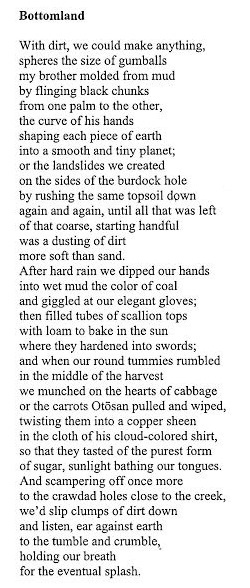Evanston Public Library is pleased to announce the results of our incredibly hardworking 101 Great Books for Kids committee. 2020 proved to be a particularly difficult year for us. When the pandemic closed our library in March it also kept all the books we were trying to read sequestered away. Thanks to the magnificent efforts of staff members like Jessica Iverson, however, deliveries were made in a safe and efficient manner to everyone in their homes. In the end, we may have ended up reading more books for this committee than ever before.
Today’s list is a testament to the dedication of the people of this committee. Please be sure to stop by our library to request any of the titles you would like to see. They represent some of the best books of the year and should not be missed.
All 101 books on this list are appropriate for readers 2-12. You can download a PDF of these titles here at: 101 Great Books for Kids 2020.
For your convenience, here are the categories of the list:
Picture Books
Folk Tales, Fairy Tales, and Religious Tales
Easy and Early Chapter Books
Poetry and Short Stories
Fiction
Comics and Graphic Novels
Nonfiction Picture Books
Nonfiction for Older Readers
- The Barnabus Project by Terry, Eric and Devin Fan.
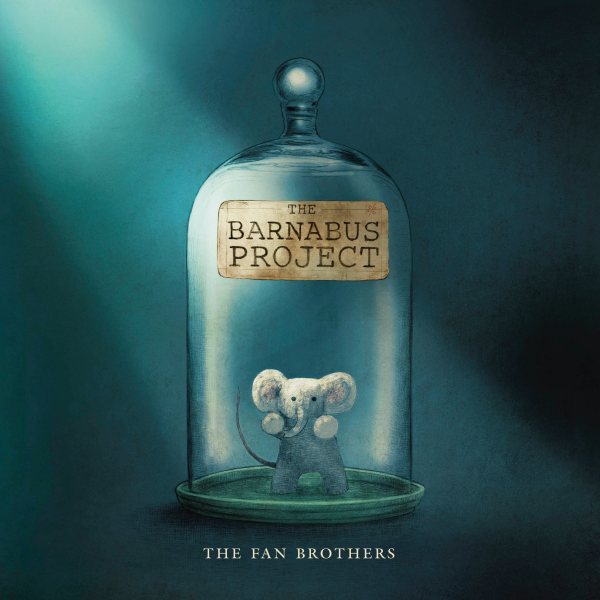
Barnabus is half mouse, half elephant, and 100% an utter failure as a genetically modified pet. When he and his imperfect friends decide to make a break for freedom, you’ll root for them every step of the way. Call Number: JPicture Fan.T
2. Danbi Leads the School Parade by Anna Kim.

Charming illustrations tell the tale of how a young Korean immigrant child’s first day of school goes from tragedy to triumph. Call Number: JPicture Kim.A
3. Evelyn Del Rey Is Moving Away by Meg Medina, ill. Sonia Sánchez.

What do you do when your “numero uno” best friend is moving away? Daniela and Evelyn squeeze every bit of fun out of their last day in this sweet, hopeful narrative. Call Number: JPicture Medin.M
4. Facts vs. Opinions vs. Robots by Michael Rex.

A bunch of cheery robots help readers learn the difference between facts and opinions in this colorful, funny, much-needed romp. Call Number: JPicture Rex.M
5. Friday Night Wrestlefest by J.F. Fox, ill. Micah Player.

Are you ready to RUMBLE??? Where will your loyalties lie when Dangerous Daddoo takes on the Tag Team Twins with Mama-Rama joining in the fun? Call Number: JPicture Fox.J
6. The Haunted Lake by P.J. Lynch.
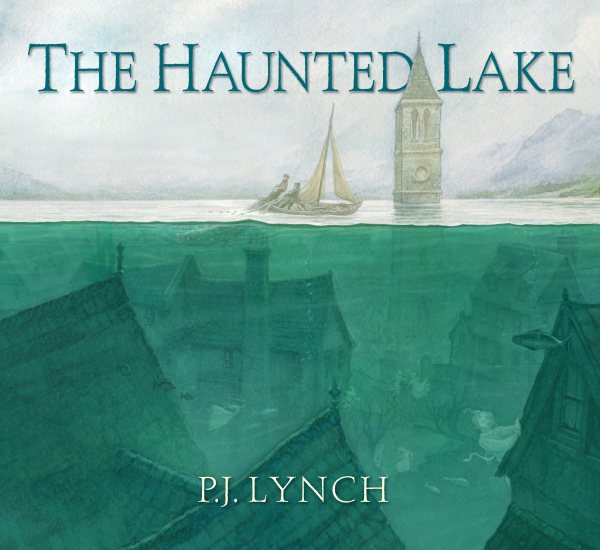
Jacob loves Ellen and Ellen loves Jacob. But when Jacob explores a mysterious light in an underwater tower, he’s sucked into the embrace of the beautiful, very dead, Lillith. Can Ellen rescue her love? Call Number: JPicture Lynch.P
7. Hike by Pete Oswald.
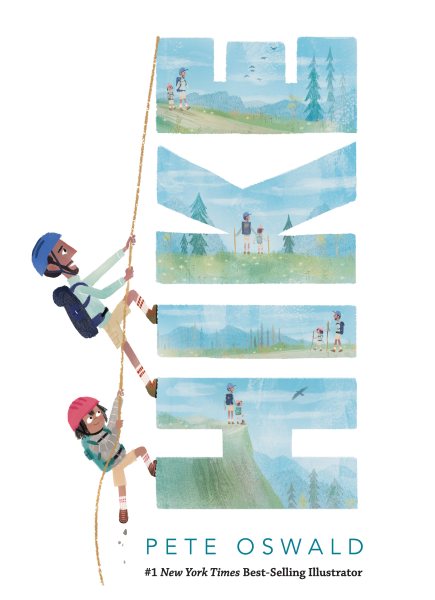
A father and child travel to the mountains and enjoy the great outdoors in this warm wordless book. Call Number: J Picture Oswal.P
8. I Am Every Good Thing by Derrick Barnes, ill. Gordon C. James.
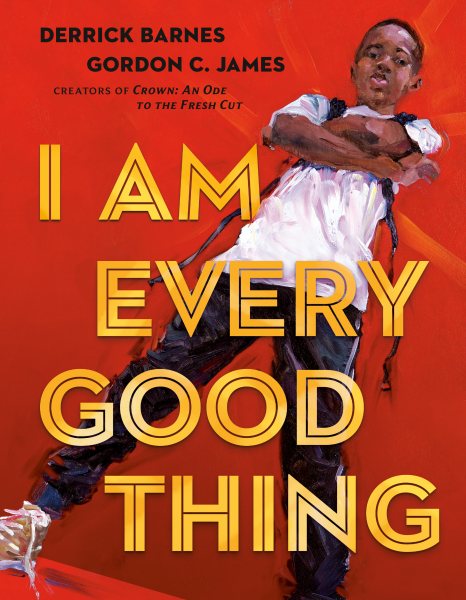
“I am a roaring flame of creativity. / I am a lightning round of questions, and / a star-filled sky of solutions”. An empowering ode to Black boy joy. Call Number: JPicture Barne.D
9. I Talk Like a River by Jordan Scott, ill. Sydney Smith.

“I wake up each morning with the sounds of words all around me. And I can’t say them all . . .” This exquisitely illustrated book tells the tale of a stuttering kid who finds comfort in his father’s advice. Call Number: JPicture Scott.J
10. My Best Friend by Julie Fogliano, ill. Jillian Tamaki.
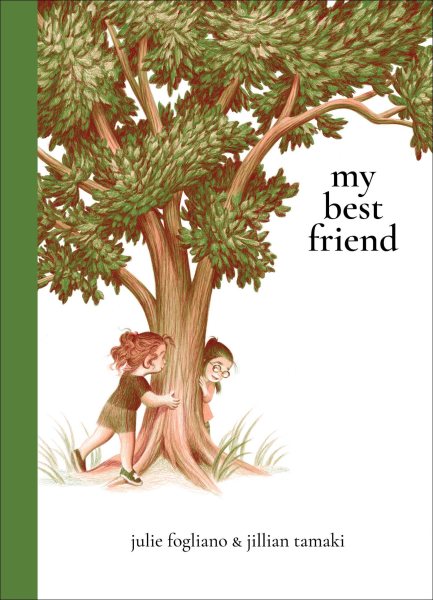
“she is my best friend i think / i’ve never had a best friend so i’m not sure.” Two girls meet, play, and enact what may be the world’s most perfect example of friendship. Call Number: JPicture Fogli.J
11. Nana Akua Goes to School by Tricia Elam Walker, ill. April Harrison.
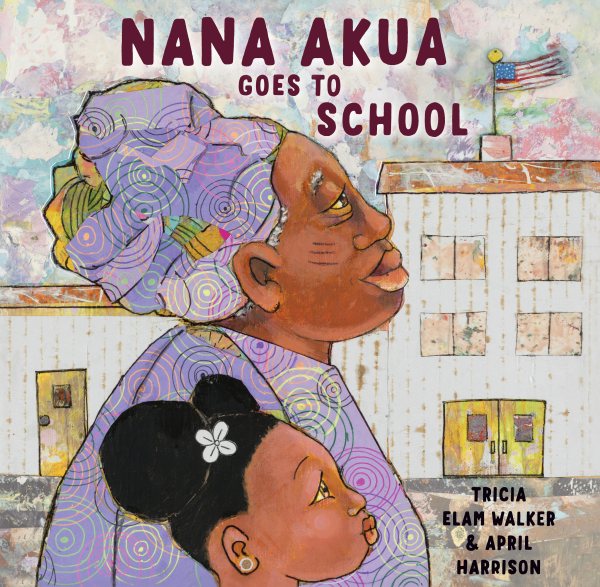
Grandparents Day is coming up and Zura’s Nana Akua intends to arrive. But with the traditional tribal marks on her face, will Zura’s classmates be nice or be mean? Call Number: JPicture Walke.T
12. A New Green Day by Antoinette Portis.
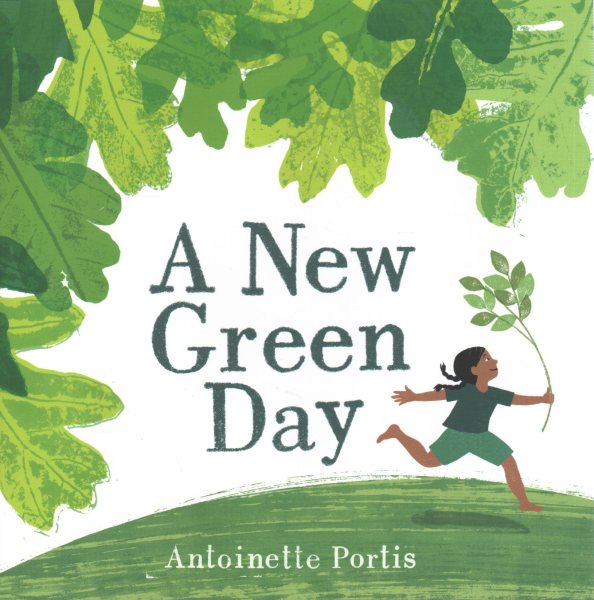
From a “comma in the long, long sentence of the stream” (a tadpole!) to “a black coat slipped around Earth’s shoulders” (night!) simple riddles and breathtaking pictures produce a beautiful book. Call Number: JPicture Porti.A
13. Old Rock (Is Not Boring) by Deb Pilutti.
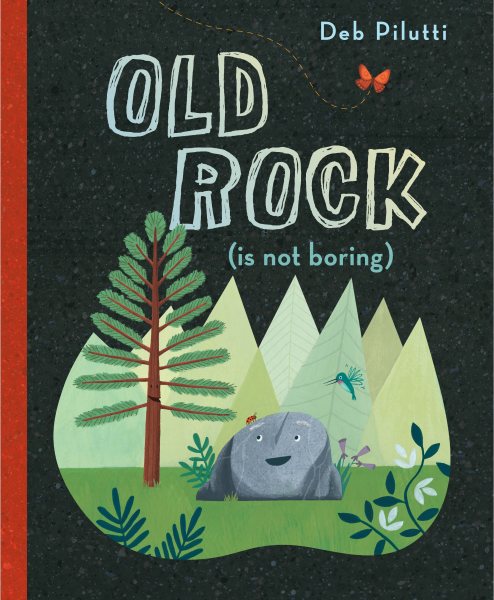
The other forest creatures think Old Rock lives a boring life, but it astounds them with stories of its surprisingly eventful existence. A clever, humorous science lesson. Call Number: JPicture Pilut.D
14. On Account of the Gum by Adam Rex.
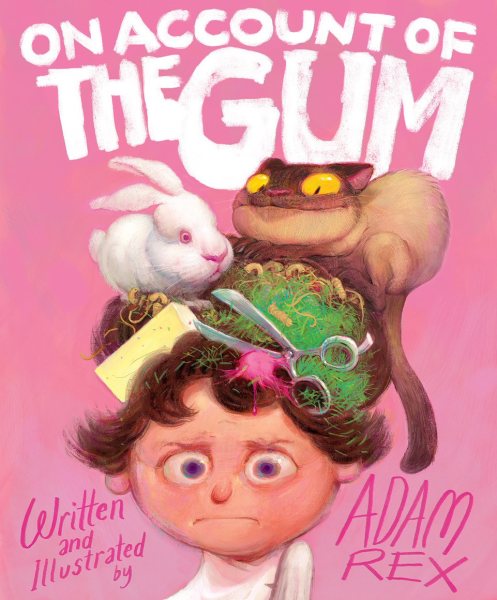
Oh no. There’s gum stuck in your hair? Don’t worry, I know a surefire solution. A book where things get increasingly, hilariously, catastrophically worse. Call Number: JPicture Rex.A
15. Outside In by Deborah Underwood, ill. Cindy Derby.
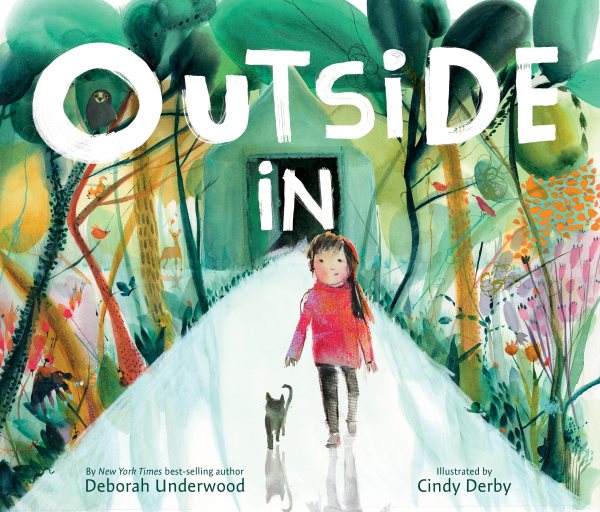
When you forget that the Outside exists, it has ways of gently reminding you. Nature is the true star of the show in this gentle, poetic celebration of the outdoors. Call Number: JPicture Under.D
16. Overground Railroad by Lesa Cline-Ransome, ill. James E. Ransome.
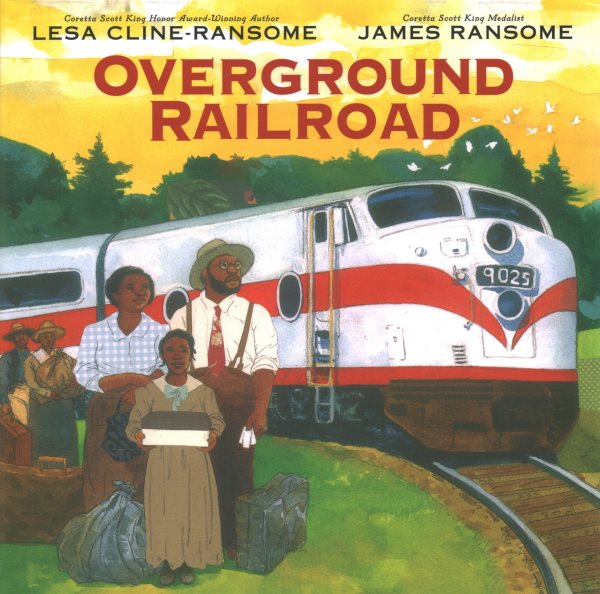
At the crack of dawn Ruth Ellen clutches her book of the life of Frederick Douglass as she and her family climb a train bound for New York City. A thrilling historic tale of one family’s hope for a better life. Call Number: JPicture Cline.L
17. A Place Inside of Me: A Poem to Heal the Heart by Zetta Elliott, ill. Noa Denmon.
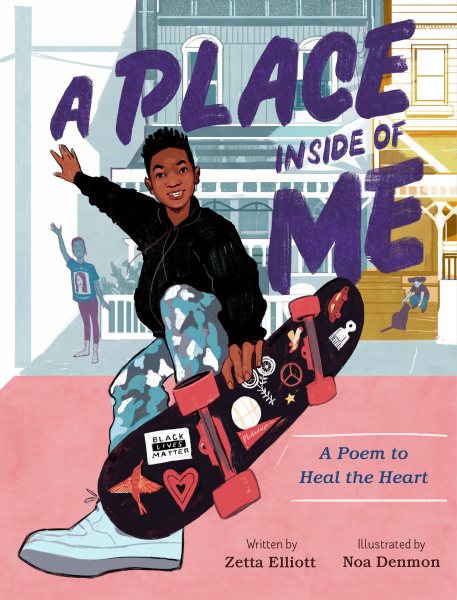
Deep down inside you might feel joy, fear, anger, and peace. But more than anything else, feel the love. A poem of pride by an Evanston author. Call Number: JPicture Ellio.Z
18. Salma the Syrian Chef by Danny Ramadan, ill. Anna Bron.
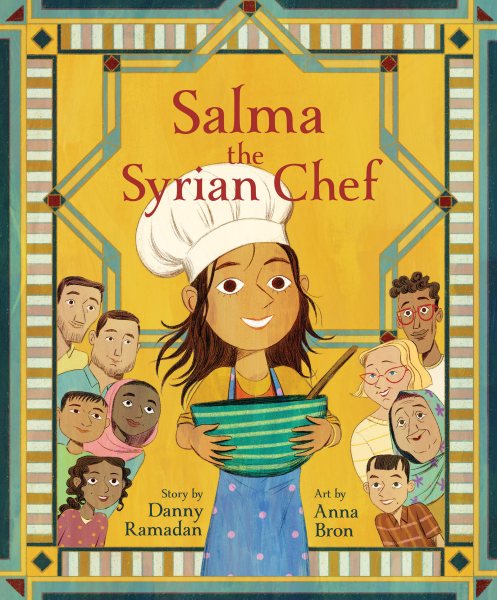
Salma, a Syrian refugee living in Vancouver, hopes she can make her mother happy again by cooking one of her favorite dishes. A lovely celebration of community and compassion. Call Number: JPicture Ramad.D
19. Smashy Town by Andrea Zimmerman and David Clemesha, ill. Dan Yaccarino.
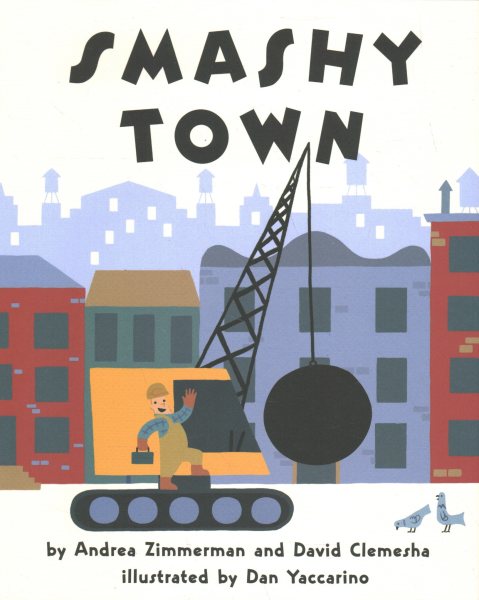
Who’s looking for some serious smash time? Join Mr. Gilly as he crashes, tumbles and crumbles a great big building down to smithereens. Expect to read this one out loud again and again! Call Number: JPicture Zimme.A
20. This Old Dog by Martha Brockenbrough, ill. Gabriel Alborozo.
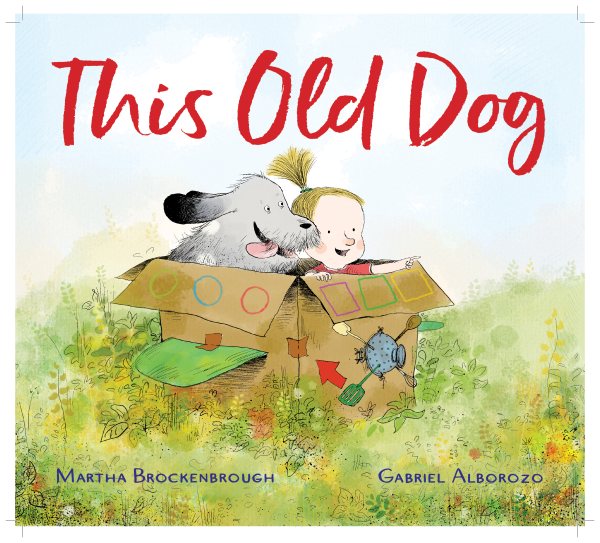
Old Dog likes to take things slow to explore the world, but his people just rush rush rush. Will New Girl be the friend he needs? Call Number: JPicture Brock.M
21. We Are Water Protectors by Carole Lindstrom, ill. Michaela Goade.
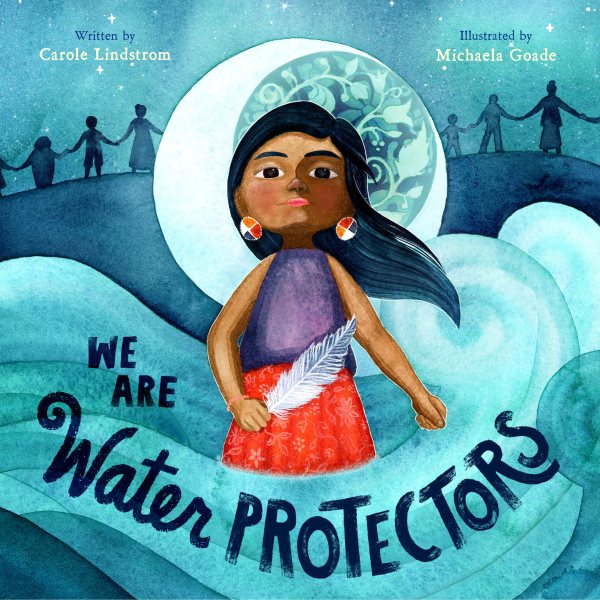
A powerful look at the Indigenous-led movements in the United States to stop the oil pipelines from ruining the natural world. Call Number: JPicture Linds.C
22. Your Name Is a Song by Jamilah Thompkins-Bigelow, ill. Luisa Uribe.
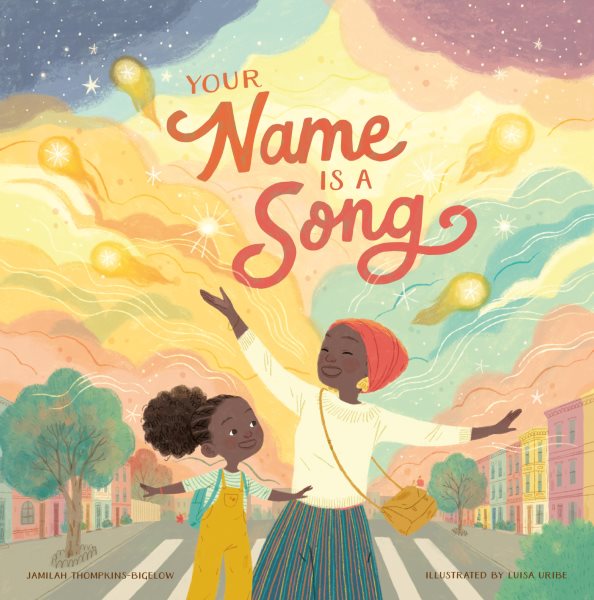
On the first day of her new school, no one can pronounce a little girl’s name. Fortunately, her mother has a surefire solution. A celebration of names of every kind. Call Number: JPicture Thomp.J
23. Chia and the Fox Man: An Alaskan Dena’ina Fable adapted by Barbara J. Atwater and Ethan J. Atwater, ill. Mindy Dwyer.

Orphaned Chia does a fox a great wrong by stealing its axe. Will he do what’s right or reject his elders’ teachings? Call Number: JPicture Atwat.B
24. The Fabled Life of Aesop by Ian Lendler, ill. Pamela Zagarenski.

Born a slave, young Aesop learned early on that by using his gift of storytelling he could dispense wisdom and outwit oppression at the same time. Contains twelve of Aesop’s folktales. Call Number: xBiog Aesop Lendl.I
25. The Feathered Serpent and the Five Suns: A Mesoamerican Creation Myth by Duncan Tonatiuh.

When the gods of Mesoamerica fail to create human creatures, they give the sacred bones of creation to the lord of the underworld. Only Quetzalcóatl, the Feathered Serpent, is brave enough to take back the bones and try again. Call Number: x398.208972 Tonat.D
26. The Secret of the Tattered Shoes by Jackie Morris, ill. Ehsan Abdollahi.

A weary soldier encounters a castle with a mystery. The king needs to know why his daughters’ shoes are tattered and torn every night. But is the answer worth dying for? Call Number: x398.20943 Morri.J
27. Tales of the Feathered Serpent: Rise of the Halfling King by David Bowles, ill. Charlene Bowles.

Sayam’s just your average half-human boy in this Mayan tale. When he pops out of an egg and is raised by a kind witch, he has no idea he’ll soon be challenging a tyrant for his throne. Call Number: JGraphic Bowle.D
28. Three Billy Goats Buenos by Susan Middleton Elya, ill. Miguel Ordóñez.

A beautiful blend of Spanish and English retells the classic story of three plump little cabritos and the hungry gigante that wants to munch them up. Call Number: JPicture Elya.S
29. Albert Hopper, Science Hero by John Himmelman.

Join intrepid science explorer Albert Hopper and his equally fearless (sorta) niece and nephew as they drill down to the center of the Earth! Science facts merge with wacky adventures. Fun for all! Call Number: J Himme.J
30. All the Dear Little Animals by Ulf Nilsson, ill. Eva Eriksson, translated by Julia Marshall.
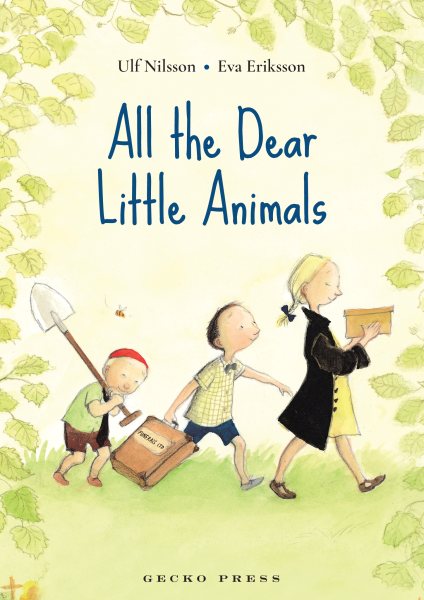
When Esther finds a dead bumblebee, she joins her friend and her little brother Puttie in becoming the neighborhood funeral directors for a day. A funny, strangely touching look at the lighter side of death. Call Number: J Nilss.U
31. A Bear Named Bjorn by Delphine Perret, translated by Antony Shugaar.
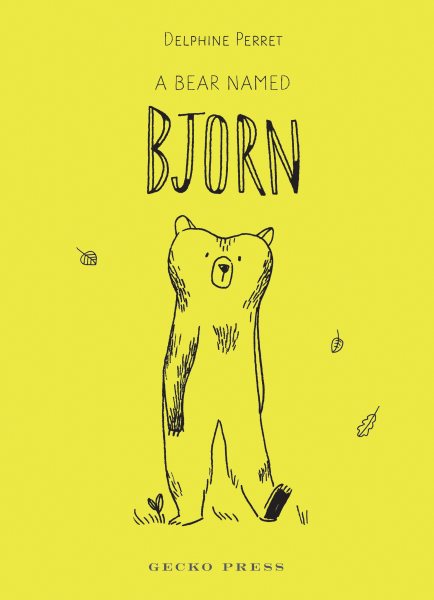
Six small stories tell the tale of a bear and his friends. Fans of Winnie-the-Pooh will find much to love in this charming collection. Call Number: JChapter Perre.D
32. The Best of Iggy by Annie Barrows, ill. Sam Ricks.
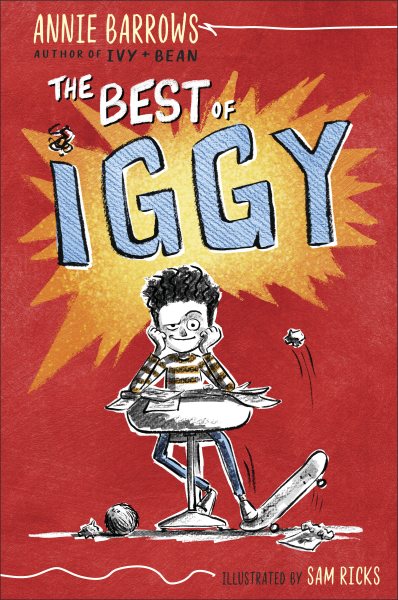
“Iggy is the hero of this book because he’s the one who does the things in it. All the things he does (in this book) are bad. Every last one of them.” Intrigued? Then find out just what Iggy did. Call Number: JChapter Barro.A
33. Mindy Kim and the Yummy Seaweed Business by Lyla Lee, ill. Dung Ho.

Being the new kid is hard enough, but what happens when people make fun of your food? Enterprising Mindy Kim has a solution, and it might just get her a friend in the process. Call Number: JChapter Lee.L
34. See the Cat: Three Stories About a Dog by David LaRochelle, ill. Mike Wohnoutka.
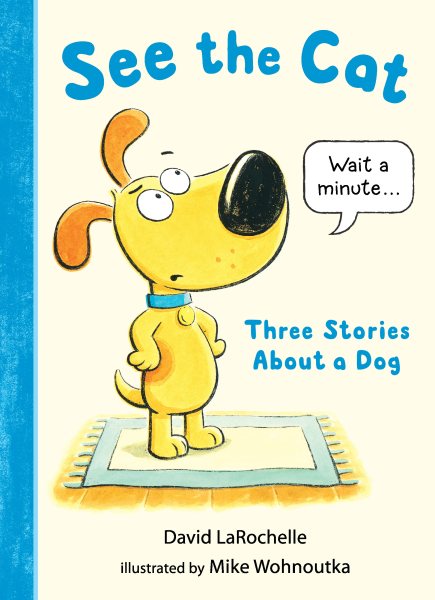
In this easy book charmer, a much put upon dog must contend with simple narration that clearly wishes him ill. Call Number: JEasy Laroc.D
35. Stella Endicott and the Anything-Is-Possible Poem by Kate DiCamillo, ill. Chris Van Dusen.

Stella likes school and she does not like know-it-all Horace Broom. But when she and Horace accidentally end up locked in a closet in the pitch black, the solution to their problem lies in friendship. Call Number: JChapter Dicam.K
36. Ty’s Travels: All Aboard! by Kelly Starling Lyons, ill. Nina Mata.

“Woo-woo!” All aboard the Ty express! When no one in his family will play with him, Ty makes his own fun and soon everyone’s getting involved. Call Number: JBegin Lyons.K
37. What About Worms? by Ryan T. Higgins.

Tigers may be big and brave, but they do have one fear: WORMS! So what happens when the worms decide that Tiger’s a wonderful guy? Call Number: JPicture Wille.M
38. A Hatful of Dragons: And More Than 13.8 Billion Other Funny Poems by Vikram Madan.
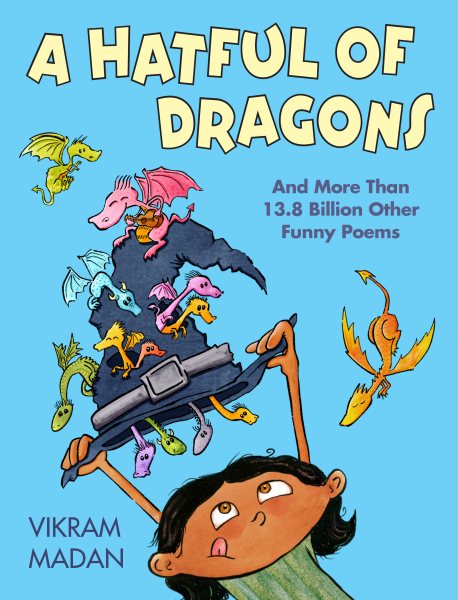
Hilarity abounds in this wild and wacky conglomeration of unique (and goofy) poems! Expect 13.8 billion laughs! Call Number: x811 Madan.V
39. I Wish by Toon Tellegen, ill. Ingrid Godon, translated by David Colmer.
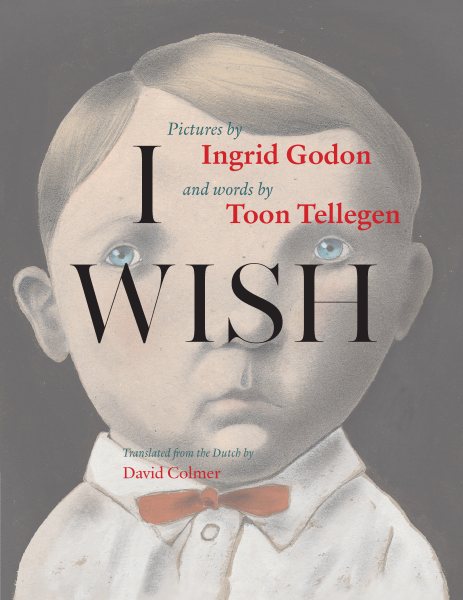
A strange, melancholy, oddly hopeful book for our strange, melancholy, oddly hopeful little world. Call Number: x811 Telle.T
40. Just Like Me by Vanessa Brantley-Newton.
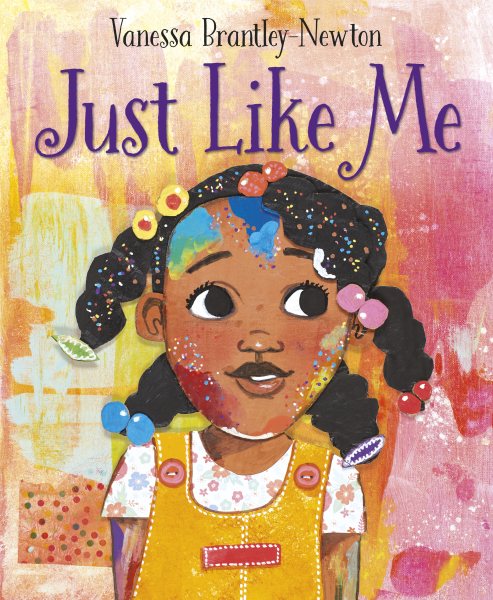
The girls in this book might be drummers, little sisters, shy, or “door buster”s, but each one has something important to say, so you better sit back and listen. Call Number: x811 Brant.V
41. On a Snow-Melting Day: Seeking Signs of Spring by Buffy Silverman.
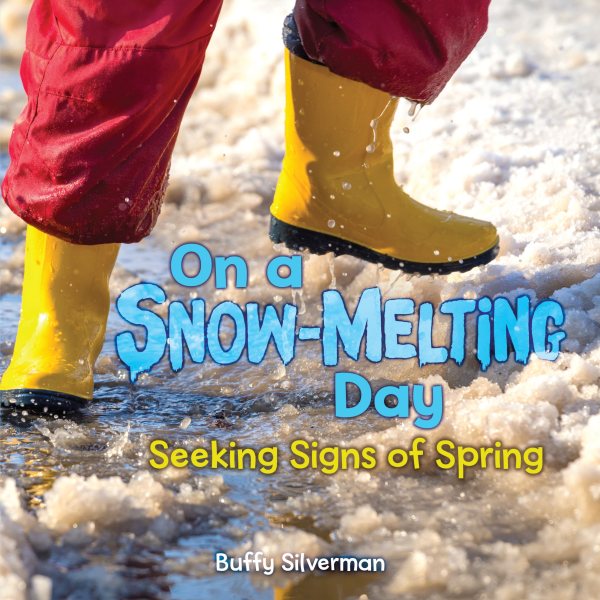
Are you ready to take a deep dive into a drip-droppy, slip-sloppy, hawk-squawking, woods-walking, crocus-poking, mitten-soaking, snow-melting day? Gorgeous photography celebrates the arrival of spring. Call Number: x508.2 Silve.B
42. Once Upon an Eid: Stories of Hope and Joy by 15 Muslim Voices, edited by S.K. Ali and Aisha Saeed, ill. Sara Alfageeh.
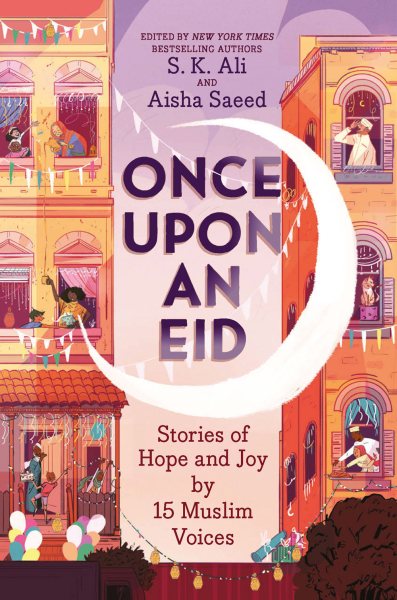
These captivating short stories–some funny, some poignant–by some of the best Muslim authors writing today, capture the various ways Eid is celebrated. Call Number: x297.36 Once
43. The Blackbird Girls by Anne Blankman.
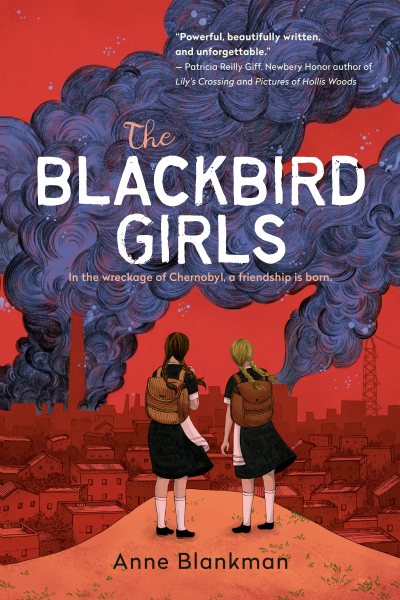
In 1986 Ukraine two girls become unlikely friends after experiencing the fallout from the horrifying Chernobyl crisis. Call Number: J Blank.A
44. Echo Mountain by Lauren Wolk.
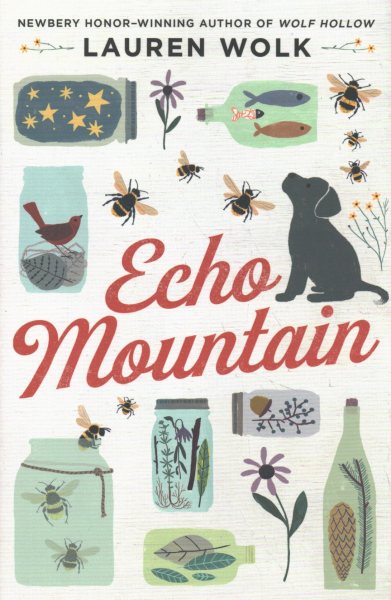
Everyone blames Ellie for her father’s accident but this city girl turned mountain expert is determined to find a cure for his coma. A Depression-era tale of fortitude punctuated with scintillating descriptions and writing. Call Number: J Wolk.L
45. Efrén Divided by Ernesto Cisneros.
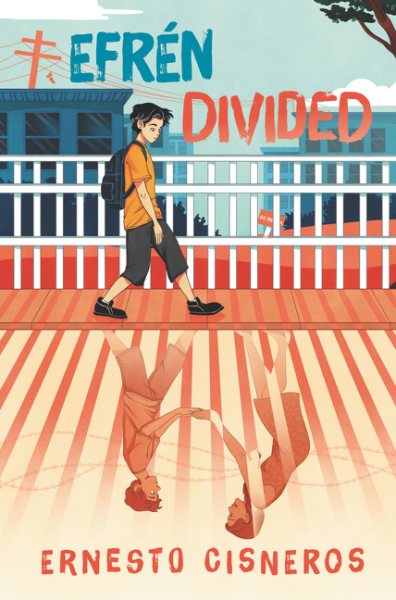
Fifth grader Efrén’s life turns upside down after he discovers his beloved mother has been deported. This powerful, fast-paced novel shows a boy struggling to keep his family together. Call Number: J Cisne.E
46. Fighting Words by Kimberly Brubaker Bradley.
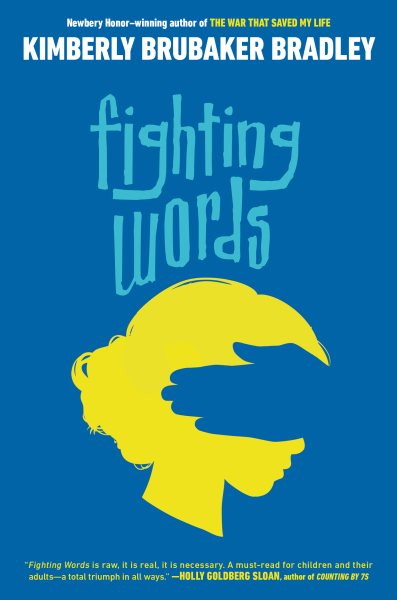
Sisters Della and Suki have always stuck together, even when they had to live with their mom’s terrible boyfriend. Now he’s headed to jail but Suki’s still not okay. A tough and gripping story of abuse and hope. Call Number: J Bradl.K
47. Fly On the Wall by Remy Lai.
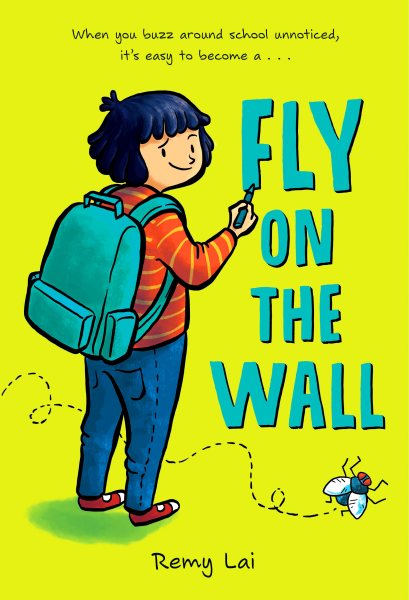
Henry Khoo’s family treats him like a baby, so he does the only natural thing in response: he buys a ticket and hops a plane to Shanghai! A hilarious and clever adventure. Call Number: J Lai.R
48. From the Desk of Zoe Washington by Janae Marks.

Budding chef Zoe discovers a letter from her estranged birth father serving time in jail for murder. When he tells her he didn’t do it, Zoe will stop at nothing to prove his innocence. Call Number: J Marks.J
49. A Game of Fox and Squirrels by Jenn Reese.
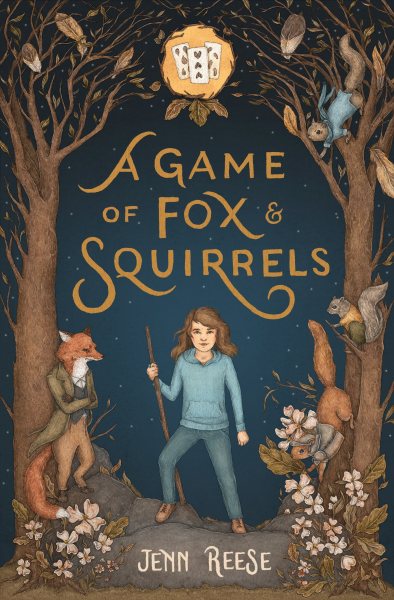
If you could have only one wish, what would it be? When Samantha plays a game with a charming fox, she has a chance to make everything go back to the way it was. But should she? Call Number: J Reese.J
50. Get a Grip, Vivy Cohen by Sarah Kapit.
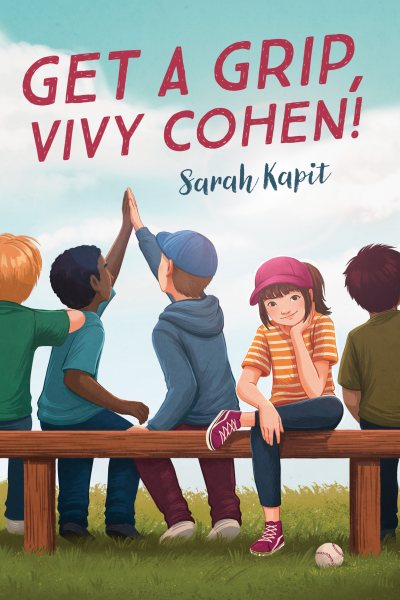
Autistic Vivy can throw a mean knuckleball and wants to play on an all-boys’ little league team. Made up of emails between Vivy and a Major League pitching star, this engaging book is a home run. Call Number: J Kapit.S
51. The Girl and the Ghost by Hanna Alkaf.
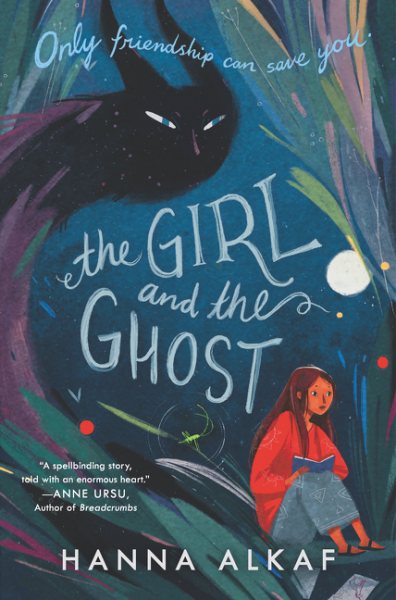
Suraya’s best friend has always been a ghost. He’s cruel and terrible and scary and he adores Suraya. So what happens when she decides the two can’t be together anymore? Call Number: J Hanna
52. Here in the Real World by Sara Pennypacker.
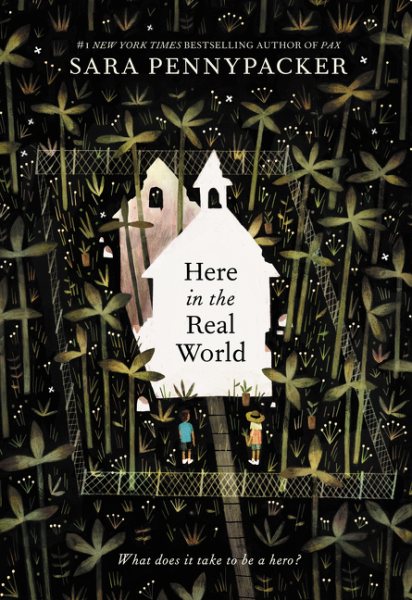
Ware loves the age of knights and chivalry. Jolene prefers the reality of plants and trees. A powerful look at friendship and the birth of a budding artist. Call Number: J Penny.S
53. Hide and Seeker by Daka Hermon.
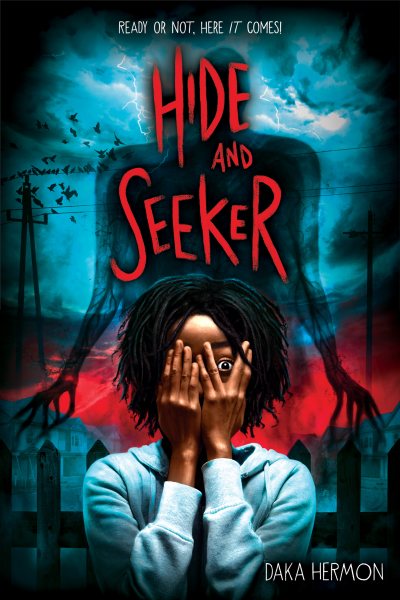
A simple game of Hide and Seek turns into a nightmare when a malevolent monster starts pulling kids into its terrifying world. You can run, but you cannot hide! Call Number: J Hermo.D
54. King and the Dragonflies by Kacen Callender.
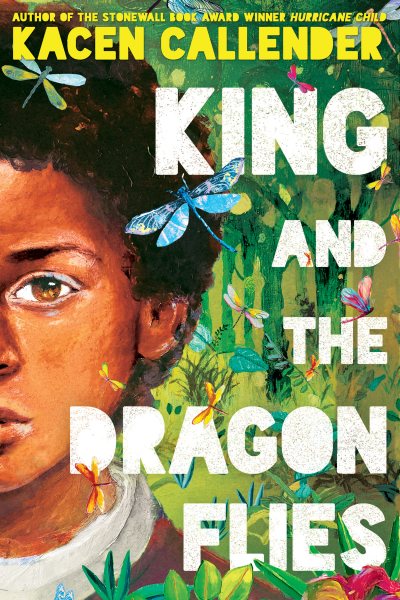
In this visceral Louisiana-set novel, twelve-year-old Kingston experiences racism and homophobia while grieving the death of an older brother who may now be a dragonfly. Call Number: J Calle.K
55. Leaving Lymon by Lesa Cline-Ransome.
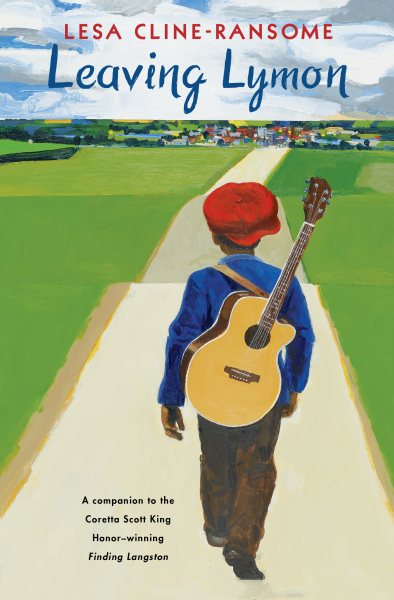
In the 1940s, Lymon loves music and his grandpops. However, after tragedy strikes, he must leave his home and travel into an uncertain future up North. Call Number: J Cline.L
56. The Magic in Changing Your Stars by Leah Henderson.
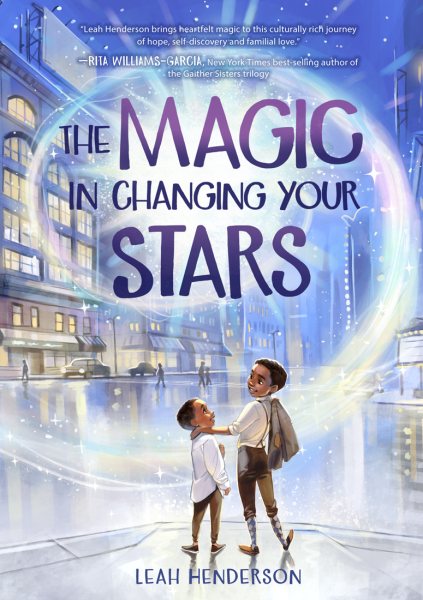
After Ailey botches his audition for The Wiz, his grandfather hands him magical shoes that once belonged to the legendary Bo Bojangles Robinson. Soon Ailey’s transported to 1939 Harlem where he meets his grandfather…as a boy with tapdance dreams! Call Number: J Hende.L
57. The Only Black Girls in Town by Brandy Colbert.
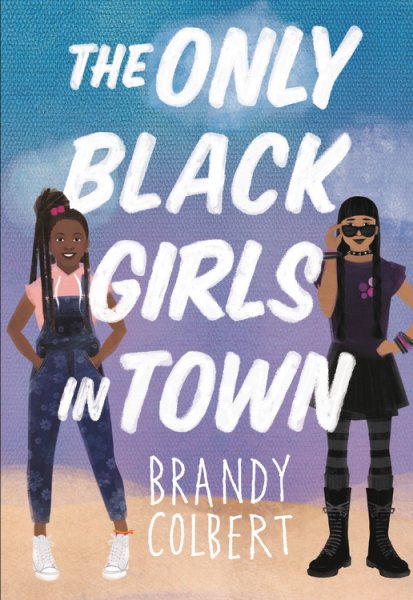
California surfer Alberta is the only Black girl in her grade until goth Brooklynite Edie moves into the house next door. Can such different people become friends? Call Number: J Colbe.B
58. Planet Omar: Accidental Trouble Magnet by Zanib Mian, ill. Nasaya Mafaridik.
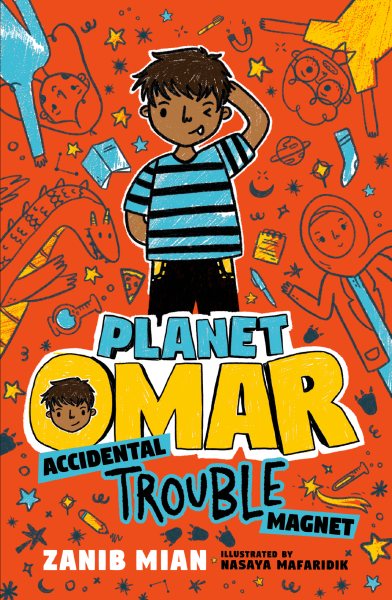
A Pakistani Muslim boy living in England faces big changes when he starts school in a new town. Fans of Wimpy Kid and Big Nate, meet the one and only Omar! Call Number: J Mian.Z
59. Second Dad Summer by Benjamin Klas, ill. Fian Arroyo.
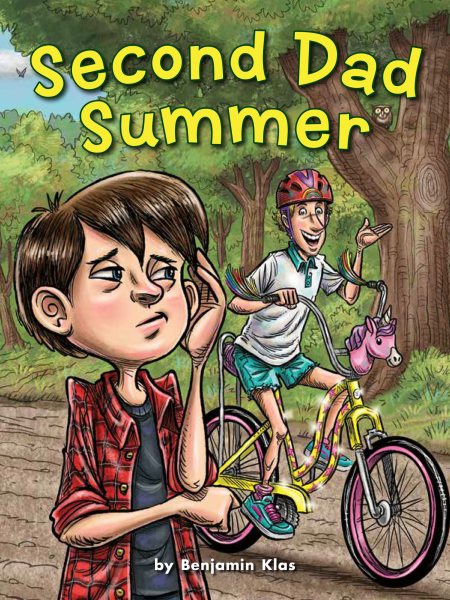
Jeremiah spends the summer with his dad. The only problem: his father’s flamboyant new boyfriend embarrasses him. Will Jeremiah learn to accept the new dad in his life? Call Number: J Klas.B
60. Show Me a Sign by Ann Clare Le Zotte.
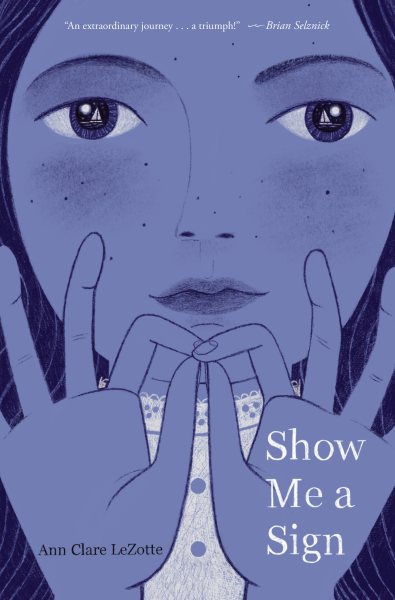
Set in 1805, this atmospheric novel introduces Mary Lambert, a proud Deaf girl who lives among other Deaf people on Martha’s Vineyard. Still mourning the death of her beloved older brother, Mary finds her world shaken up by the arrival of a troubling stranger. Call Number: J Lezot.A
61. Skunk and Badger by Amy Timberlake, ill. Jon Klassen.
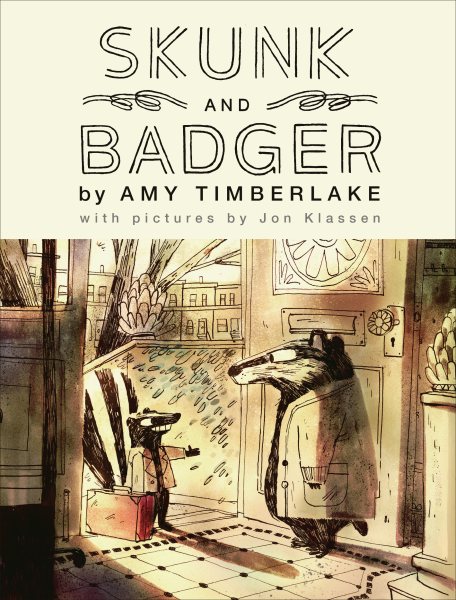
As far as Badger’s concerned, he’s happiest holed up in his brownstone doing “important rock work”. But that’s before Skunk arrives and turns his life upside down in this kooky, charming bedtime read. Call Number: J Timbe.A
62. Stand Up, Yumi Chung by Jessica Kim.
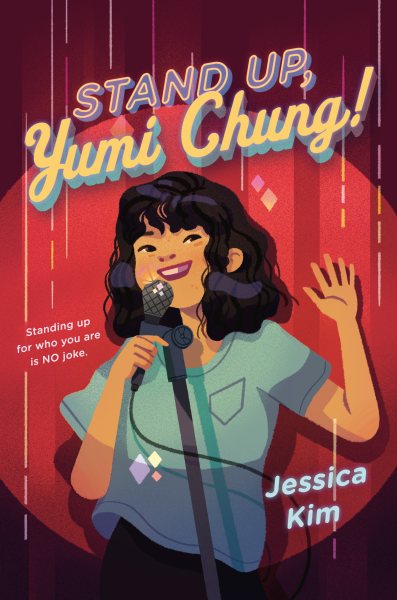
Shy Yumi wants to be a stand-up comedian, but her parents do not see a future in telling jokes. When she sneaks a peek at a summer comedy camp, the instructor mistakes her for someone else…and Yumi goes along with it! Breezy fun. Call Number: J Kim.J
63. The Total Eclipse of Nestor Lopez by Adrianna Cuevas.
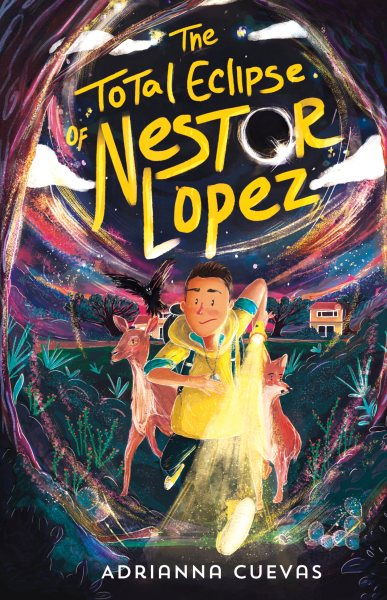
Cuban-American Army brat Nestor moves from town to town. The upside? He can talk to animals. Soon after he arrives in New Haven, Texas, he learns that he must solve a mystery involving missing pets, his abuela, and sinister forces in the woods. Call Number: J Cueva.A
64. Ways to Make Sunshine by Renée Watson, ill. Nina Mata.
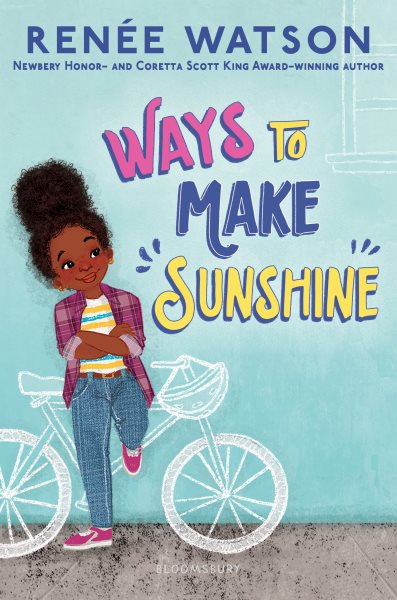
After her family experiences some financial hardship, Ryan Hart has to move to a new house and face new challenges in Coretta Scott King Author winner Watson’s chipper series opener. Call Number: J Watso.R
65. Wayside School Beneath the Cloud of Doom by Louis Sachar.
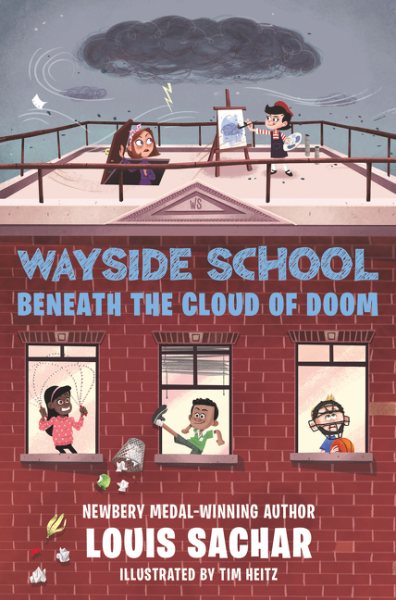
The wacky kids of Wayside School have all kinds of problems. So when a great big, nasty cloud of doom perches on top of their school, things go from weird to wild. Call Number: J Sacha.L
66. What Lane? by Torrey Maldonado.
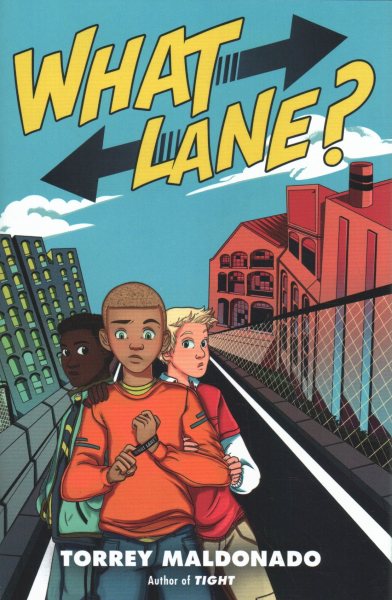
In this fast-paced realistic novel, Black sixth grader Stephen’s eyes become open to a world divided by race and force him to choose different lanes. Call Number: J Madlo.T
67. Wink by Rob Harrell.
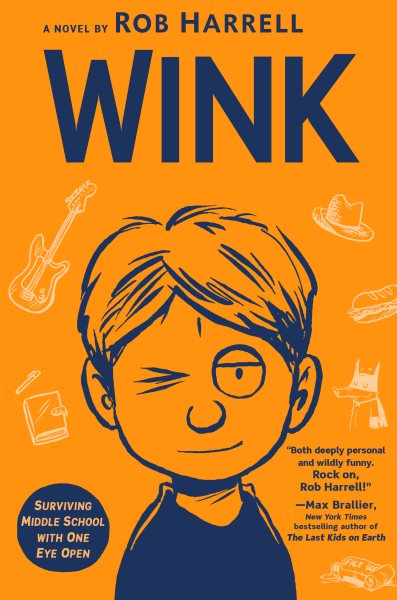
It’s hard to blend in when you’re losing your hair, forced to wear a floppy cowboy hat, and get called “the cancer kid” behind your back. But when Ross Maloy becomes obsessed with learning the guitar, things go from awful to awesome. Call Number: J Harre.R
68. Go With the Flow by Lily Williams, ill. Karen Schneemann.
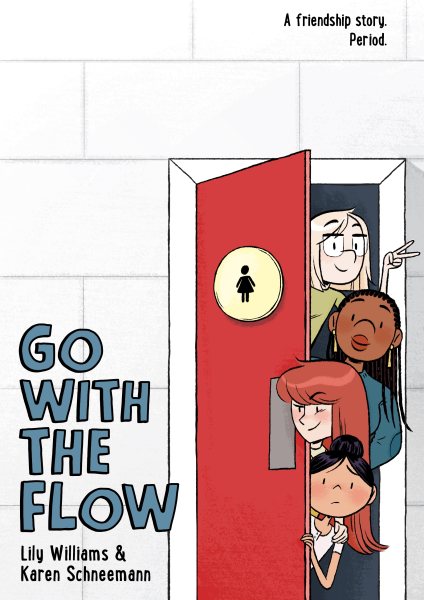
How do you battle injustice when you’re young? When Abby discovers that the tampon/tampax machines in her school are always empty, she and her friends band together to fight for what’s right. Call Number: JGraphic Willi.L
69. Green Lantern: Legacy by Minh Lê, ill. Andie Tong.
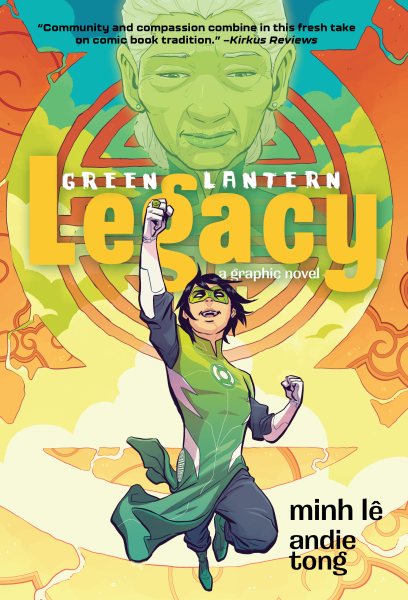
After his grandmother dies, Tai Pham is left with more than just his sadness. He’s left with her jade ring and legacy as the last Green Lantern. But can Tai get a hold on his emotions long enough to learn how the ring truly works? Call Number: JGraphic Le.M
70. Mister Invincible: Local Hero by Pascal Jousselin with Laurence Croix, translated by David Bryon and Ivanka T. Hahnenberger.
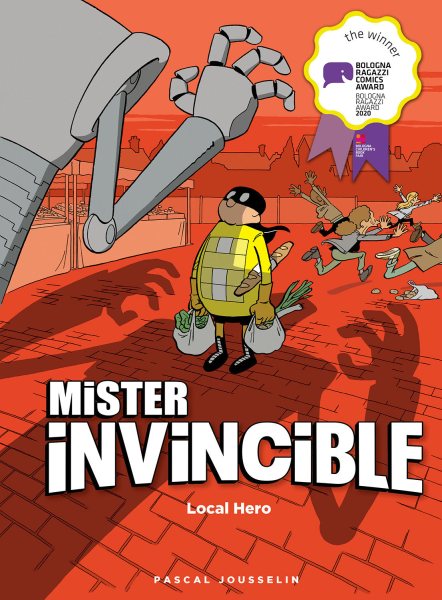
Evildoers, beware! Mister Invincible is here! With the power of playing with panels and sequential pacing, consider this French import one of the funniest and cleverest books of the year. Call Number: JGraphic Jouss.P
71. My Video Game Ate My Homework by Dustin Hansen.
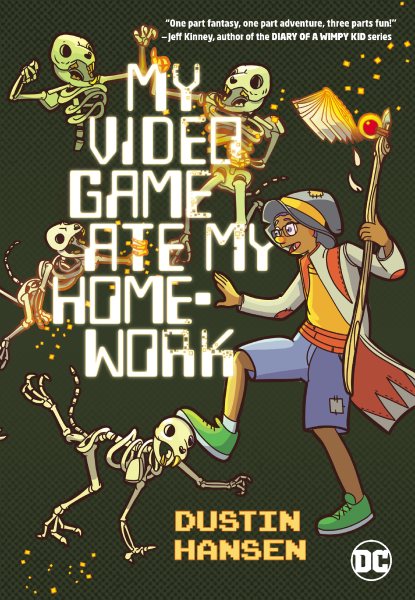
What do you do when a virtual reality game eats the science fair project that was going to save you from summer school? This accessible adventure has the answer. Call Number: JGraphic Hanse.D
72. The Postman From Space by Guillaume Perreault, translated by Françoise Bui.
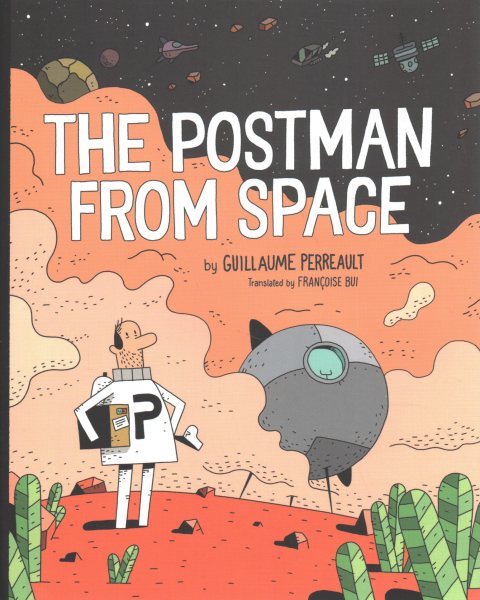
Bob’s a simple space postman who loves his regular routine. So what’s he supposed to do when the Boss gives him a wacky new route with strange planets and kooky inhabitants? A younger comic with a gentle lesson of getting out of your comfort zone. Call Number: JGraphic Perre.G
73. The Runaway Princess by Johan Troïanowski, translated by Anne Collins Smith and Owen M. Smith.
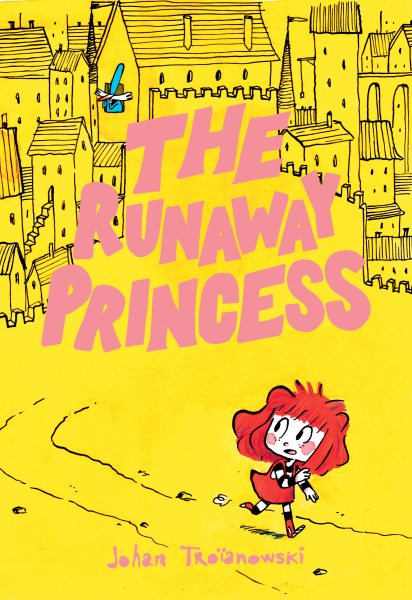
Princess Robin just can’t stay put! In three lushly illustrated stories she helps new friends, outwits a witch, and defeats a crew of nasty pirates. Call Number: JGraphic Troia.J
74. Shirley & Jamila Save Their Summer by Gillian Goerz.
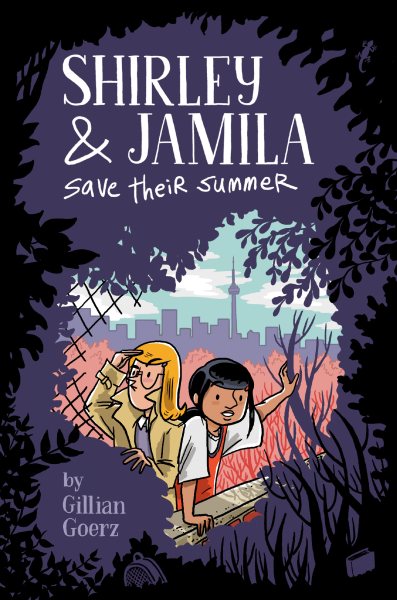
Basketball loving Jamila and super sleuth Shirley team up to escape unwanted summer camps and to solve a mystery involving a pool and a missing gecko. Call Number: JGraphic Goerz.G
75. Snapdragon by Kat Leyh.
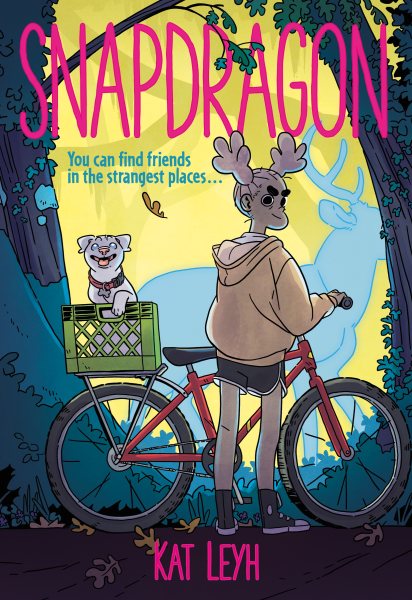
When she stumbles on the local witch in the woods, Snapdragon discovers a whole wide world where being the odd one is a blessing, not a curse. Call Number: JGraphic Leyh.K
76. Stepping Stones by Lucy Knisley, colored by Whitney Cogar.
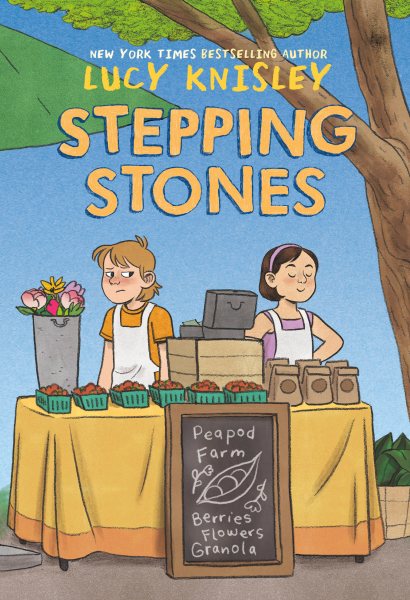
Jen does not want the following: To move to the country with her mom and her mom’s boyfriend, to get to know his kids, and to work on a farm. But what happens when she starts to like not just one but ALL of those things? An Evanston artist’s story. Call Number: JGraphic Knisl.L
77. Twins by Varian Johnson, ill. Shannon Wright.
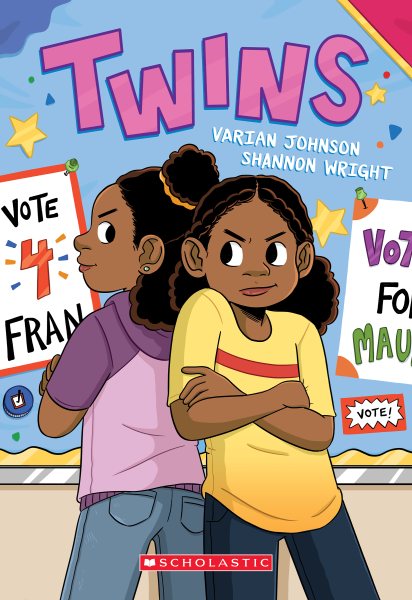
Shy Maureen can’t understand why her twin sister Francine keeps pulling away from her. Hurt and betrayed, their split culminates in each girl running against the other for class president. May the best twin win! Call Number: JGraphic Johns.V
78. Yorick and Bones by Jeremy Tankard and Hermione Tankard.
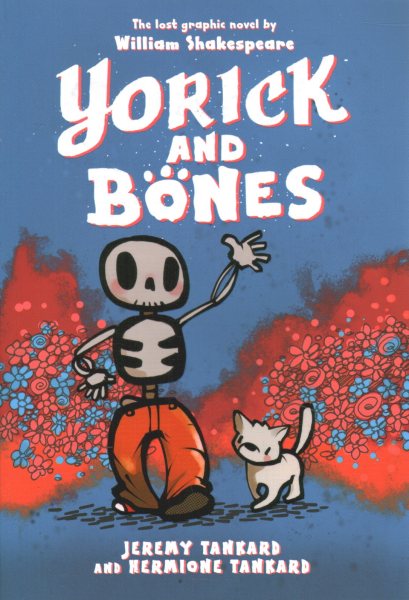
Poor Yorick. Stuck in the ground he’s rescued by a friendly pup and sets off on a quest to find a real, true friend. Can the answer to his prayers be closer than he thinks? Call Number: JGraphic Tanka.J
79. All of a Sudden and Forever: Help and Healing After the Oklahoma City Bombing by Chris Barton, ill. Nicole Xu.
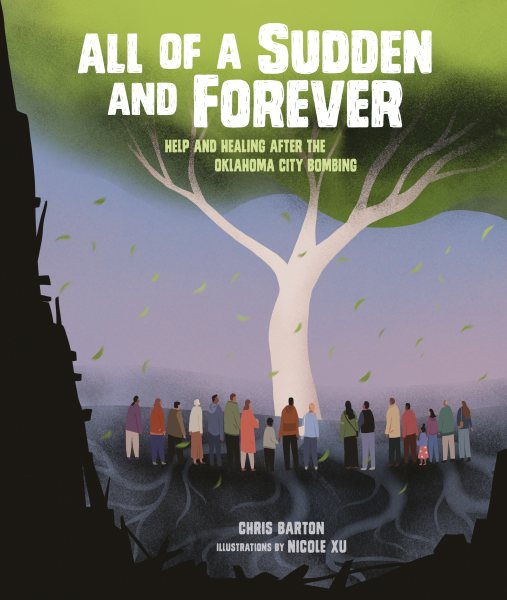
When something horrible happens, what do you do? One April morning in Oklahoma a truck with a bomb exploded. In its wake, a single tree remained. A true story of healing and recovery. Call Number: x363.32 Barto.C
80. The Cat Man of Aleppo by Irene Latham and Karim Shamsi-Basha, ill. Yuko Shimizu.
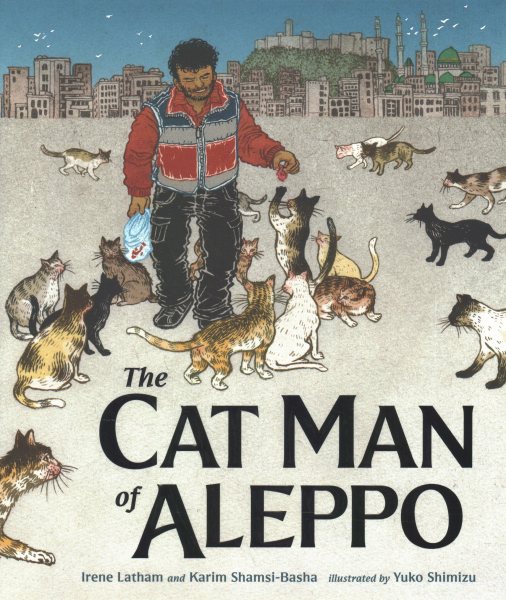
It’s not just humans that suffer when there’s war. When ambulance driver Alaa Aljaleel discovers the hungry and abandoned cats on the streets of Aleppo, Syria, he rallies the world to help him care for the small and the weak. Call Number: JPicture Latha.I
81. Clever Hans: The True Story of the Counting, Adding, and Time-Telling Horse by Kerri Kokias, ill. Mike Lowery.
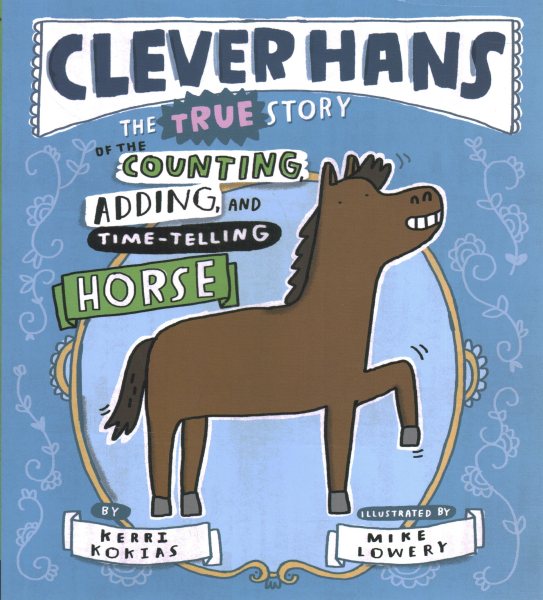
Can a horse really be as smart as a human? Clever Hans sure seemed like it. A fascinating story of the equine that fooled the world with his true intelligence. Call Number: x636.1 Kokia.K
82. Dark Was the Night: Blind Willie Johnson’s Journey to the Stars by Gary Golio, ill. E.B. Lewis.
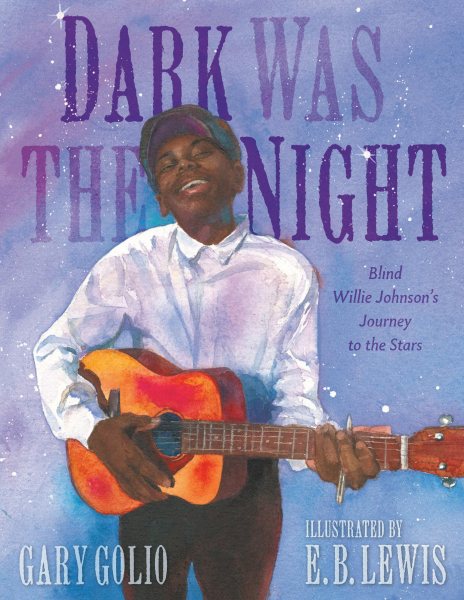
How did the voice of a blind man, travelling this country by train, literally reach to the stars? Golio brings to life the beautiful story of how Willie Johnson’s singing ended up on the Golden Record of Voyager I. Call Number: xBiog Johns.B Golio.G
83. Drawing on Walls: A Story of Keith Haring by Matthew Burgess, ill. Josh Cochran.
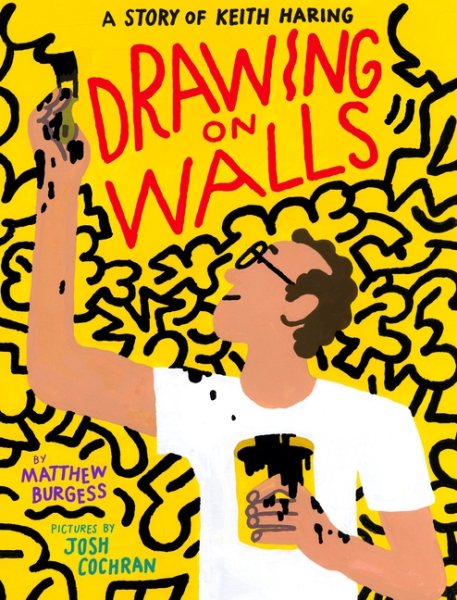
“I think it is very important to be in love with life.” Since he was a young child, Keith Haring wanted to draw and paint. Now the full story of his life comes to life in this eye-catching, vibrant, joyful biography. Call Number: xBiog Harin.K Burge.M
84. Exquisite: The Poetry and Life of Gwendolyn Brooks by Suzanne Slade, ill. Cozbi A. Cabrera.
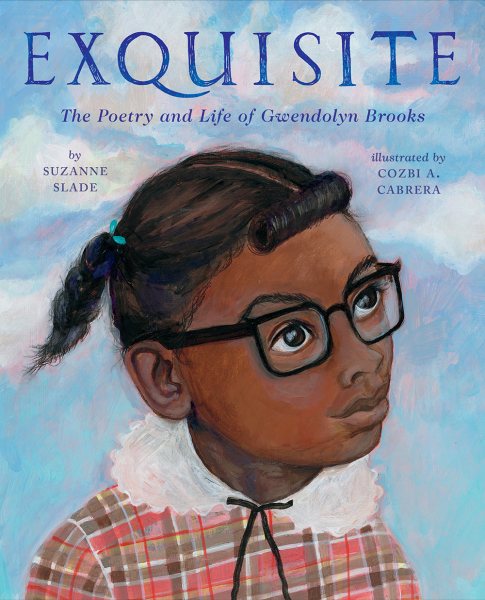
When she was a child in Chicago, this future Poet Laureate would look at the clouds and “dream about the future, which was going to be ecstatically exquisite.” A gorgeously rendered look at the power of perseverance by an Evanston artist. Call Number: xBiog Brook.G Slade.S
85. Fauja Singh Keeps Going: The True Story of the Oldest Person to Ever Run a Marathon by Simran Jeet Singh, ill. Baljinder Kaur.
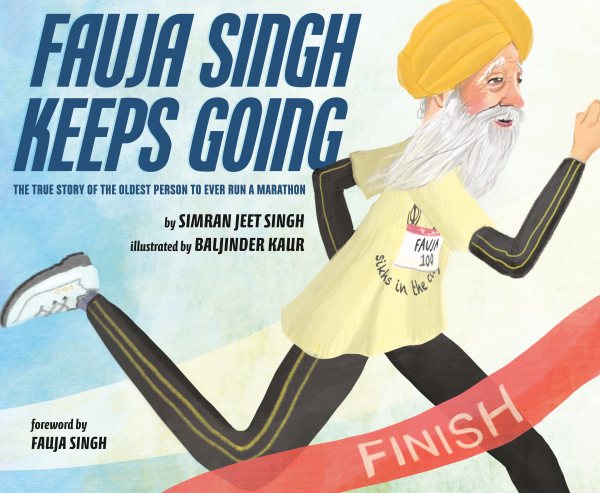
What happens when you decide to run your first marathon at the age of 81? What happens when you start finishing marathons at 100? The inspiring story of a man that has never let the world slow him down. Call Number: xBiog Faujasi Singh.S
86. A Garden in Your Belly: Meet the Microbes in Your Gut by Masha D’Yans.
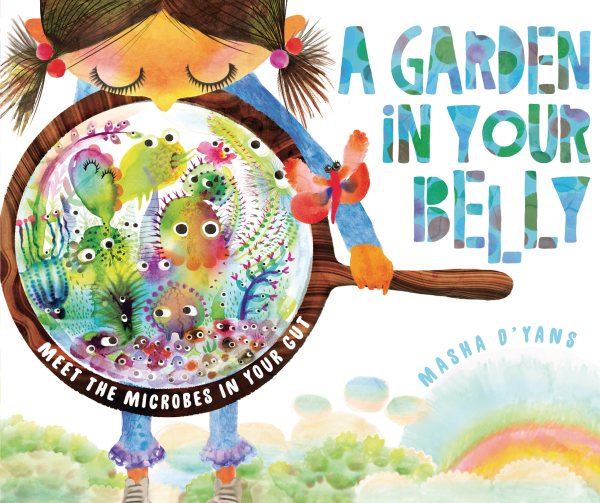
Take a gorgeous trip into your microbiome, where good food and exercise will keep the more than 100 trillion microorganisms there happy and healthy. Lush and funny watercolors bring the impossibly small to life! Call Number: x612.3 Dyans.M
87. Honeybee: The Busy Life of Apis Mellifera by Candace Fleming, ill. Eric Rohmann.
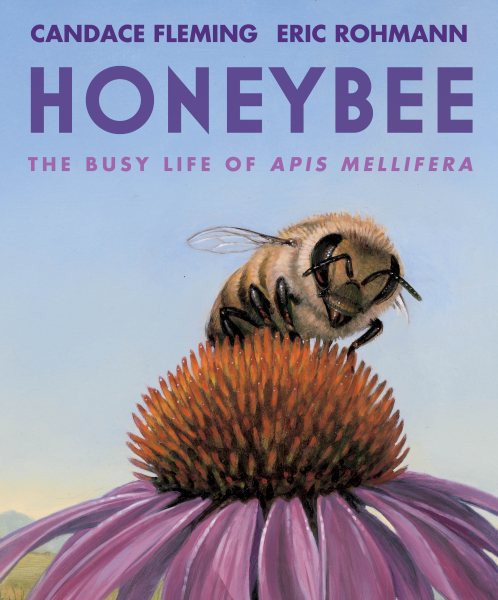
The life cycle of a bee is so much more than just getting honey. Follow an Apis mellifera as she cycles through multiple jobs in the hive, complemented by luscious, velvety oil paints. Call Number: x595.799 Flemi.C
88. If You Take Away the Otter by Susannah Buhrman-Deever, ill. by Matthew Trueman.
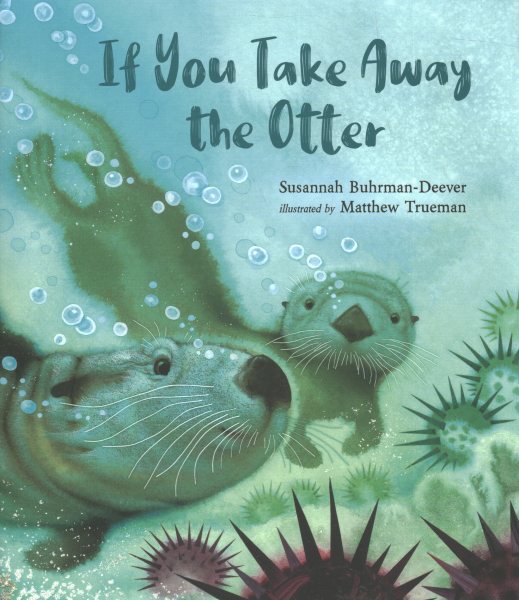
Playful sea otters aren’t merely cute. Once they were hunted to near extinction causing an army of sea urchins to wreak devastation. A clever, enticing, and beautiful look at the interconnectedness of nature. Call Number: x599.7695 Buhrm.S
89. Incredible Jobs You’ve (Probably) Never Heard Of by Natalie Labarre.
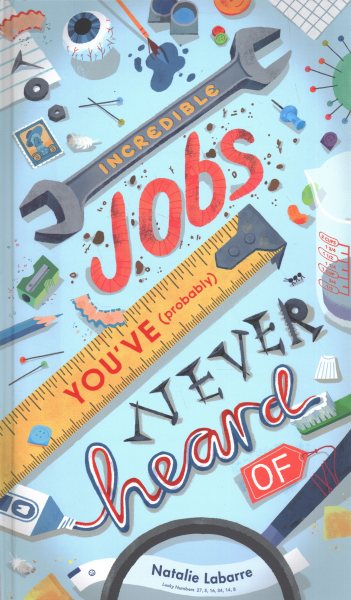
Tired of grown-ups asking you what you want to be when you grow up? Then take some tips from a book that offers you such options as water slide tester, dinosaur duster, gross stunt tester, and more! Call Number: x331.702 Labar.N
90. The Most Beautiful Thing by Kao Kalia Yang, ill. Khoa Le.
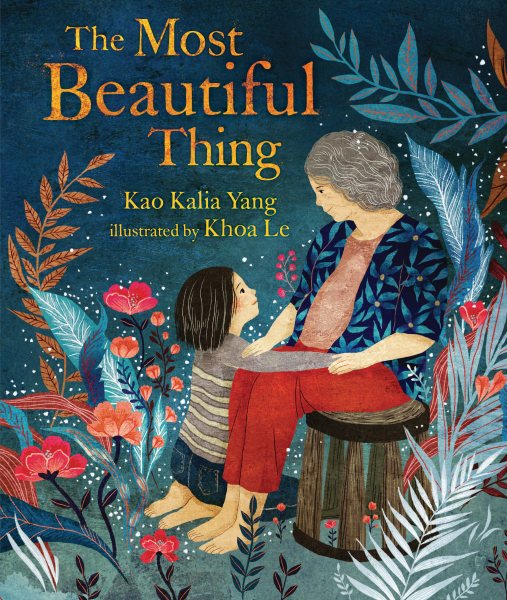
Kalia’s grandmother has one tooth, but her smile is the most beautiful her granddaughter has ever seen. A moving picture book memoir filled with jaw-dropping art about growing up with little money in a Hmong-American home. Call Number: x305.9069 Yang.K
91. A Ride to Remember: A Civil Rights Story by Sharon Langley and Amy Nathan, ill. Floyd Cooper.
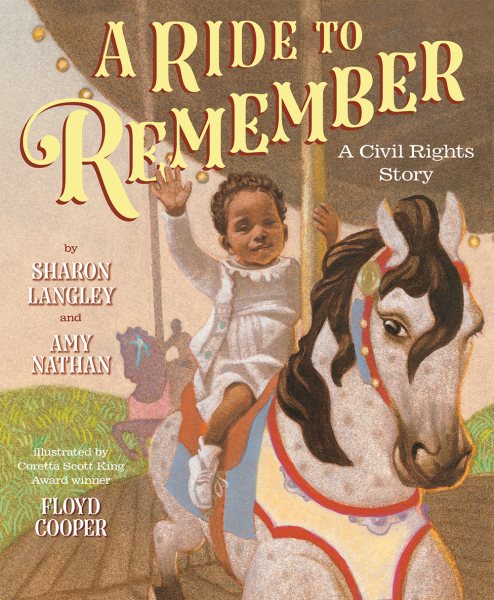
Sharon Langley looks back at 1963, the year she became the first African-American child to ride the carousel in Baltimore’s Gwynn Oak Amusement Park. Call Number: x305.8 Langl.S
92. Shirley Chisholm Is a Verb! by Veronica Chambers, ill. Rachelle Baker.
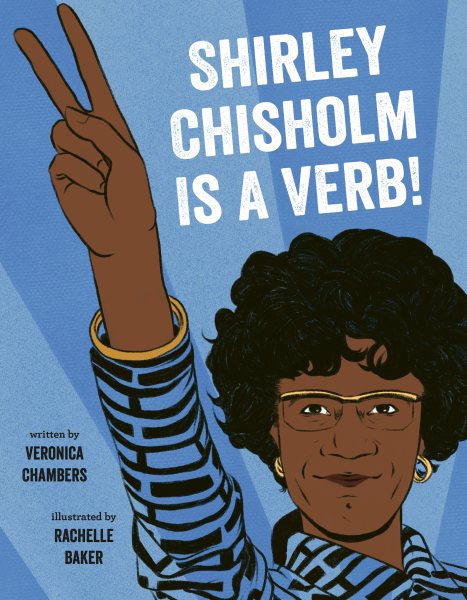
“A catalyst for change in America” gets her due in this riveting, inspirational, magnificent biography of a figure that so much more than just the first Black woman to make a bid for the presidency. Call Number: xBiog Chish.S Chamb.V
93. Swish! The Slam-Dunking, Alley-Ooping, High-Flying Harlem Globetrotters by Suzanne Slade, ill. Don Tate.
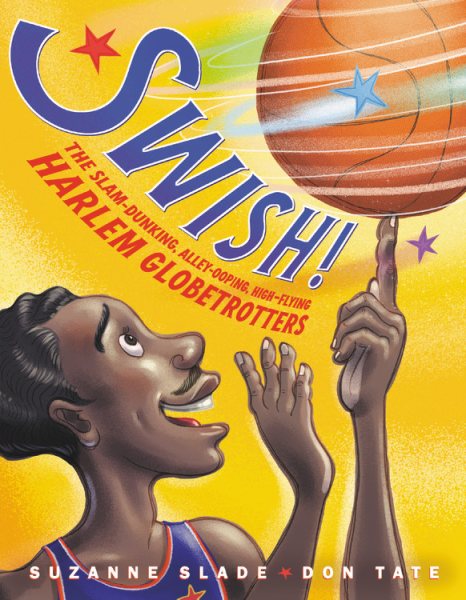
“Skilled athletes, expert players, and electrifying performers all rolled into one.” Meet the ballplayers that broke racial barriers even as they went on to live up to their globe trotting name. Call Number: x796.323 Slade.S
94. Your Place in the Universe by Jason Chin.
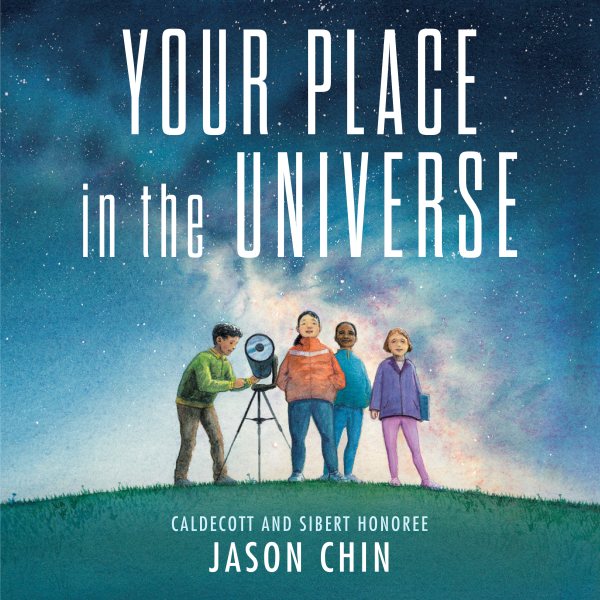
From kids to the cosmic web of the universe, gorgeous watercolors encompass the sheer scope and scale of everything inside and beyond our own galaxy. Call Number: x523.1 Chin.J
95. All Thirteen: The Incredible Cave Rescue of the Thai Boys’ Soccer Team by Christina Soontornvat.
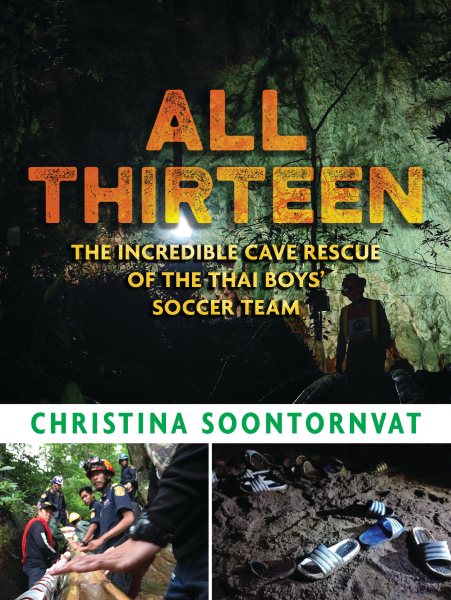
In 2018, saving twelve boys and their soccer coach trapped in a Thai cave became a worldwide rescue effort. This account chronicles how the plan came together and offers a rewarding Thai perspective along the way. Call Number: x796.525 Soont.C
96. The Bird in Me Flies by Sara Lundberg, translated by B.J. Epstein.
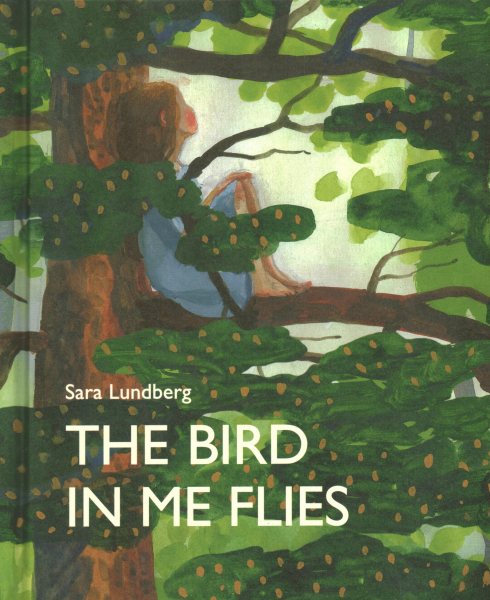
Berta may be just a farm girl, but she desperately yearns to be an artist. But in 1920s Sweden, a dream like that is impossible . . . or is it? Call Number: J Lundb.S
97. Darwin’s Rival: Alfred Russel Wallace and the Search for Evolution by Christiane Dorion, ill. Harry Tennant.
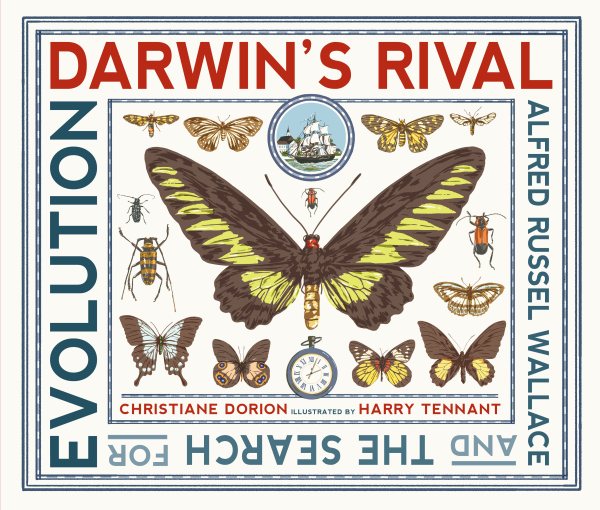
Living a life of adventure and exploration, this canny scientist helped Darwin unlock the secrets of evolution, though his name is practically lost to history today. Call Number: xBiog Walla.A Dorio.C
98. The Eagle Huntress: The True Story of the Girl Who Soared Above Expectations by Aisholpan Nurgaiv with Liz Welch.
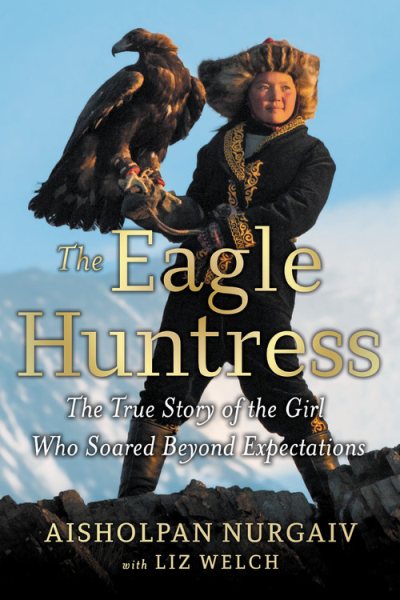
The long tradition of Kazakh eagle training has always been handed down from father to son. Now meet Aisholpan, the girl who lives to defy expectations. Call Number: xBiog Aisho.N Aisho.N
99. A Sporting Chance: How Ludwig Guttmann Created the Paralympic Games by Lori Alexander, ill. Allan Drummond.
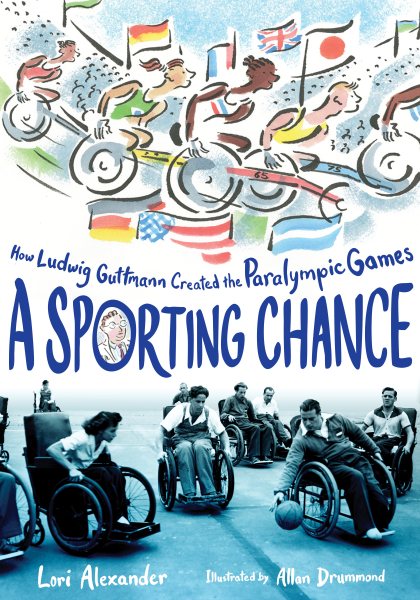
In the mid-1900s, a time when disabled people with spinal injuries had little hope, doctor Ludwig Guttmann discovered ways to help them not only survive but thrive. His efforts led to the creation of the wildly popular Paralympic Games. Call Number: xBiog Guttm.L Alexa.L
100. The Talk: Conversations About Race, Love & Truth, edited by Wade and Cheryl Willis Hudson.
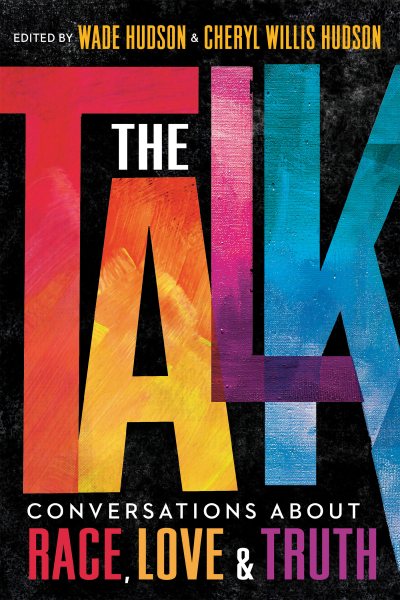
Thirty excellent authors and artists from different backgrounds talk about how to be anti-racist in a series of powerful short essays, stories, poems, and illustrations. Call Number: x305.8 Talk
101. Tracking Pythons: The Quest to Catch an Invasive Predator and Save an Ecosystem by Kate Messner.
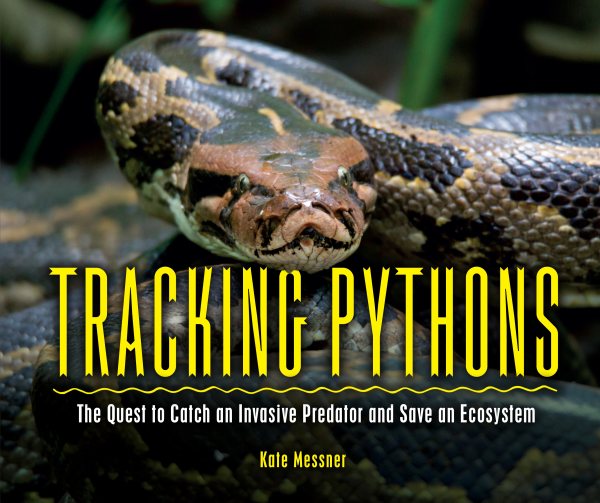
It’s a master of disguise, can swallow an entire baby deer, and is rapidly devouring the Florida natural wildlife. How do you stop an invasive species that’s practically invisible? These scientists may have found the answer. Call Number: x597.9678 Messn.K
Committee Members
Patricia Alm, Sally Battle, Betsy Bird, Chelsea Elward, Jessica Iverson, Katy Jacob, Hannah Johnson, Leigh Kennelly, Kerry Littel, Elacsha Madison, Judith Mathews, Susan McClelland, Christina Mendez, Martha Meyer, Jennifer Wasilewski Mills, Olivia Mo, Bill Ohms, Julie Rand, Reenie Ruckdaeschel, Paula Shapiro, Elizabeth English Steimle, Bridget Sweeney, Luke Thompson, Amy Louise Tripp, Jennifer Wasilewski, and Brian Wilson








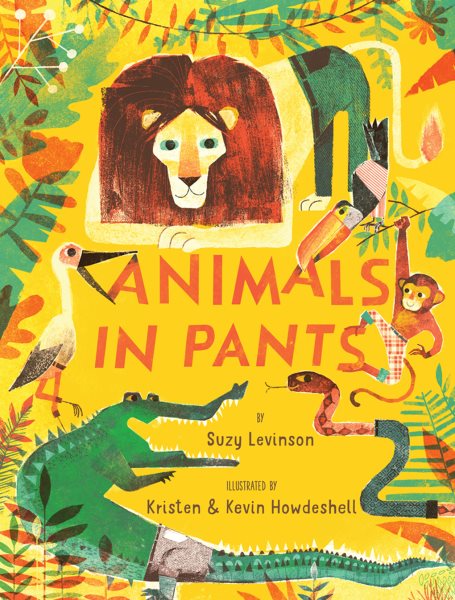
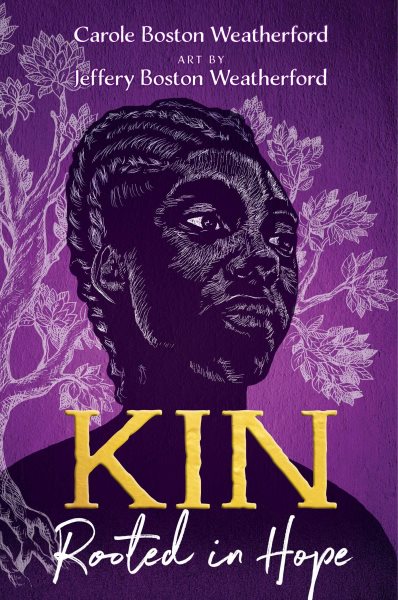
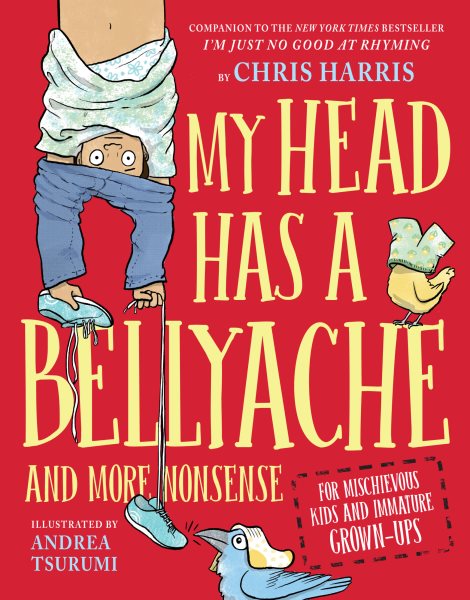
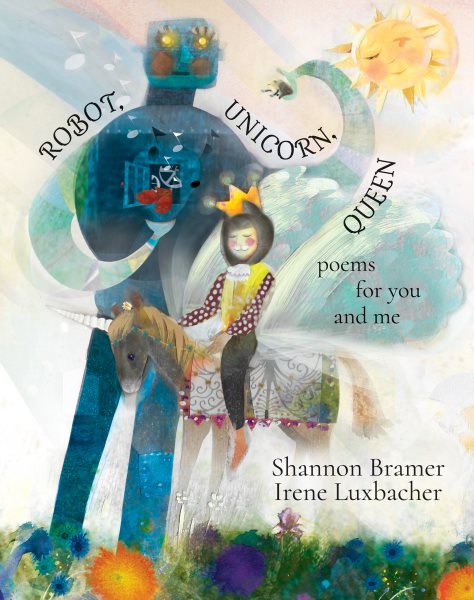
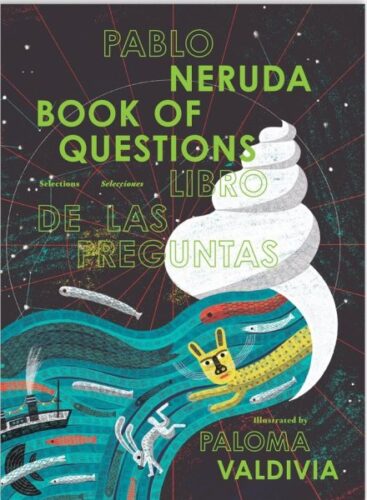

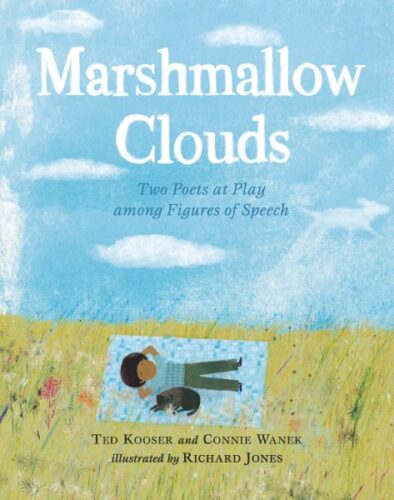
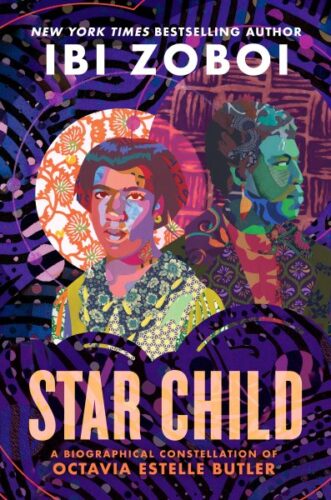
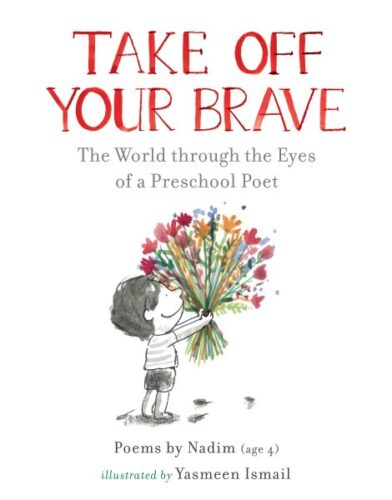
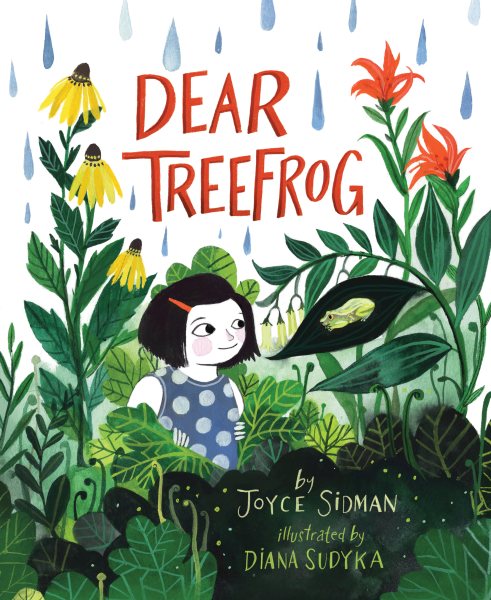
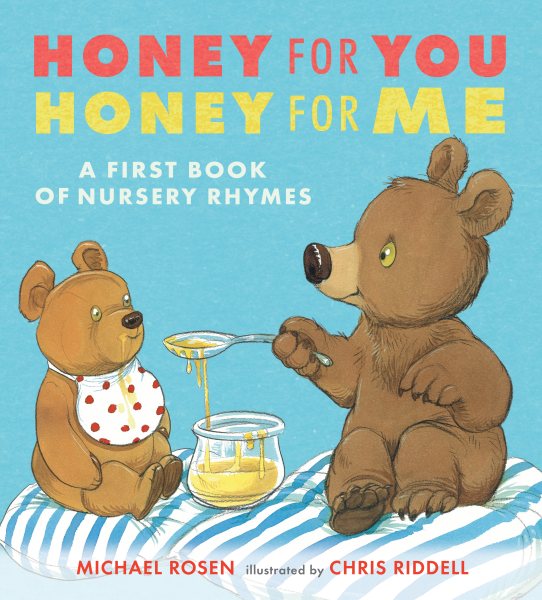
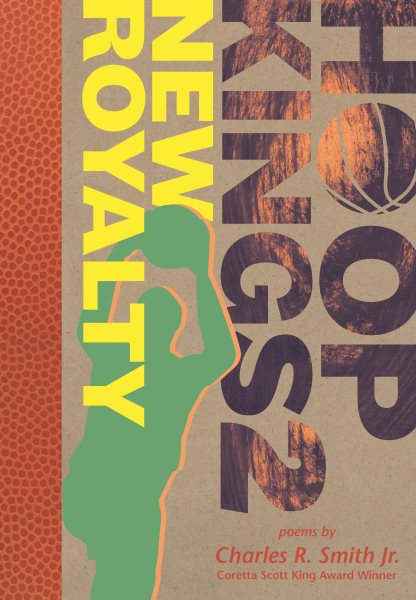
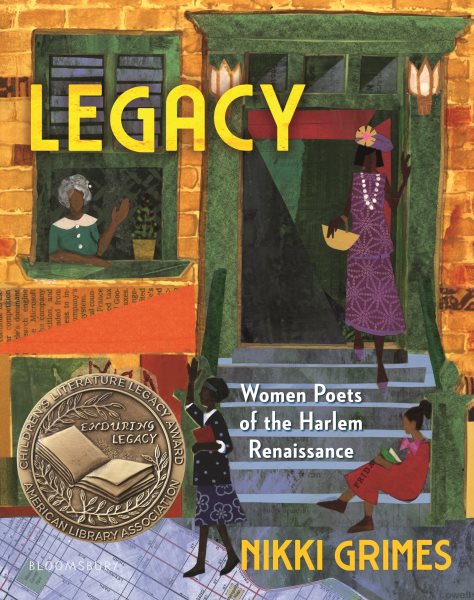
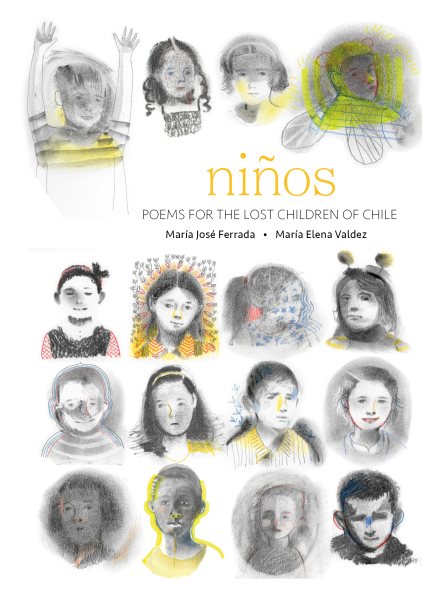
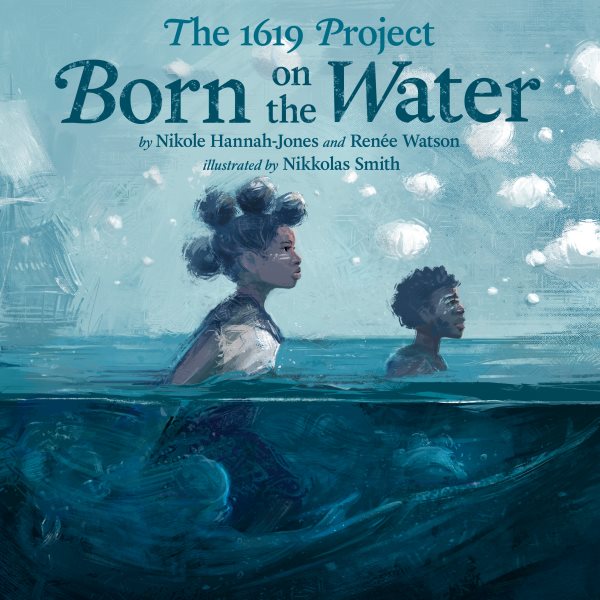








































































































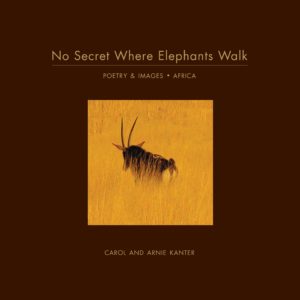
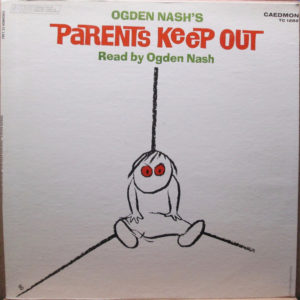
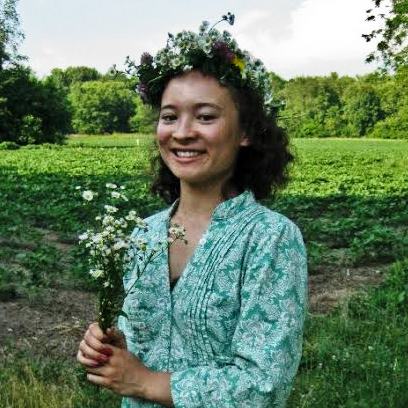 Even though National Poetry Month is winding down, we’re not done celebrating here at EPL. This
Even though National Poetry Month is winding down, we’re not done celebrating here at EPL. This 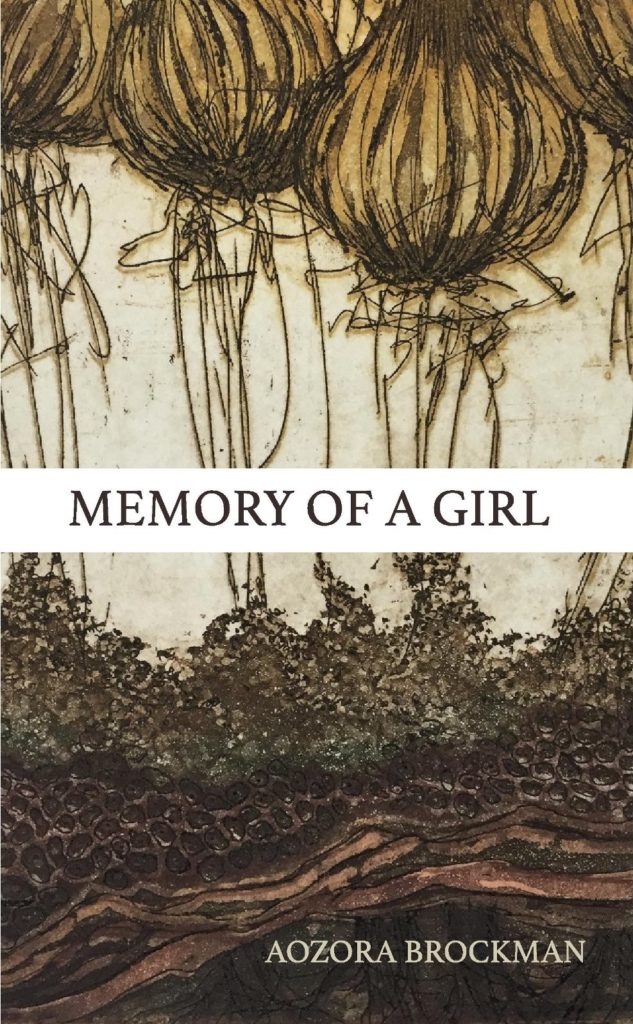 I think this is what I love most about writing poetry—sometimes, when you sit down with a pen and paper and allow yourself to write whatever comes into your mind, you discover something deep inside of you that needed to come out into the world. Suddenly something clicks into place, and whatever was vague inside your mind is now concrete, right on the page. I’ve been hooked on that feeling—of empowerment, and joy—since I was young, and that has kept me writing.
I think this is what I love most about writing poetry—sometimes, when you sit down with a pen and paper and allow yourself to write whatever comes into your mind, you discover something deep inside of you that needed to come out into the world. Suddenly something clicks into place, and whatever was vague inside your mind is now concrete, right on the page. I’ve been hooked on that feeling—of empowerment, and joy—since I was young, and that has kept me writing.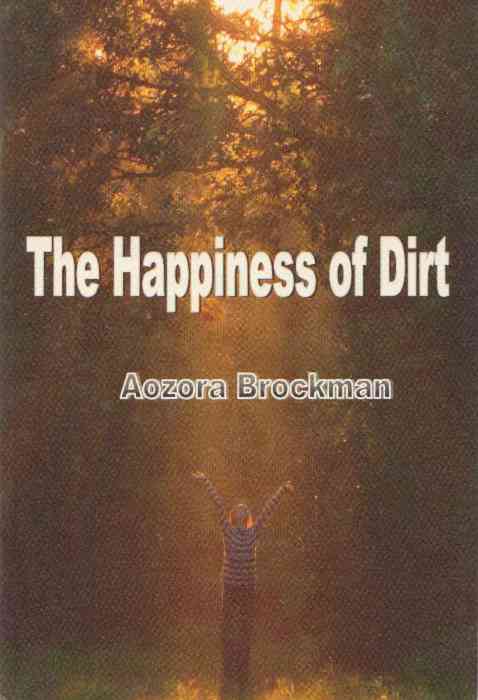 Sometimes I see something gorgeous and fall in love—a butterfly emerging from a emerald cocoon or a spider spinning an intricate web—and have to write about it, or sometimes I am digging up sweet potatoes and the joy of it sparks an idea. My father likes to say that when he’s working on the farm, he’s not composing songs or writing the next great American novel, but that his mind is essentially blank, fully concentrated on the task before him. I’m not writing poetry while I’m working either, but something about being completely engaged, on hands and knees in dirt, allows my mind to wander off and settle on an idea. Most of the time I am so busy on the farm that I forget the idea or image during the course of a physically intense work day, but usually it comes back to me again while working in the field and sticks in my memory.
Sometimes I see something gorgeous and fall in love—a butterfly emerging from a emerald cocoon or a spider spinning an intricate web—and have to write about it, or sometimes I am digging up sweet potatoes and the joy of it sparks an idea. My father likes to say that when he’s working on the farm, he’s not composing songs or writing the next great American novel, but that his mind is essentially blank, fully concentrated on the task before him. I’m not writing poetry while I’m working either, but something about being completely engaged, on hands and knees in dirt, allows my mind to wander off and settle on an idea. Most of the time I am so busy on the farm that I forget the idea or image during the course of a physically intense work day, but usually it comes back to me again while working in the field and sticks in my memory.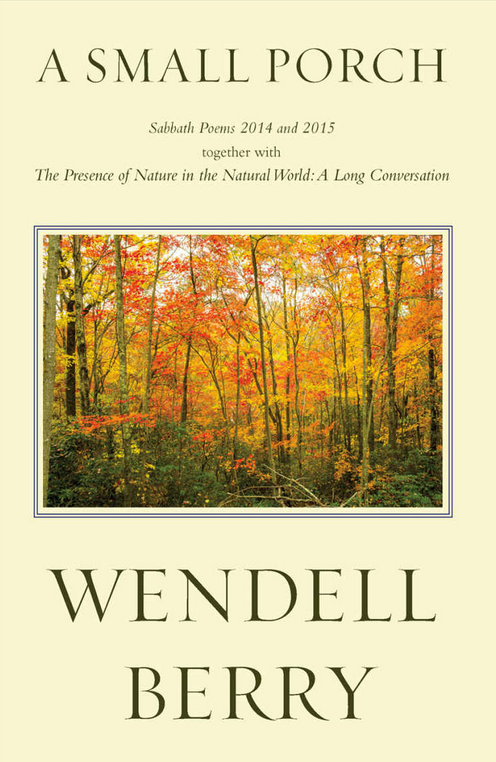 EPL: What poets have inspired you? What are you reading right now?
EPL: What poets have inspired you? What are you reading right now?